We left the car on Great Green by the Motte & Bailey pub in the village of Pirton, not far from our previous walk to Kingswalden Park, attracted back again by the promise of more green lanes and Hertfordshire hedgerows. We left the village and straightaway we were on the Icknield Way.
I’m not sure how old this notice is, but thankfully the rules have changed and we didn’t need permission to enter this greenway beneath the trees.
Through a gap in the hedge I could see into the future, across the field to the path that would bring us back three hours later.
Gnarly old field maple and elder
Sloe
For a short while it seemed I took a photo with every footstep, as if thereby to prolong each delicious moment sunk in this slow green sanctuary.
The hedgerows were rich and diverting, with blackthorn, bryony, ivy and bramble to mention a few we could name. We stopped often to look closer, drawn into the diversity, when suddenly, without warning, two express cyclists came hurtling down the track and swept us aside in their wake.
Got to go faster! Got to go faster! Got to go faster!
I thought this was a footpath not a speedway. But then later, I Googled green lanes hertfordshire and all I found were references to ‘off-roading’ or ‘greenlaning’ or ‘trail riders fellowship’. Lots of ways to tear up our ancient footpaths. We were lucky we only met cyclists.
We continued with care.
Wayfaring berries
Wayside beech
Got to go faster! Got to go faster! Got to go faster!
After a short diversion along a barley field (I think so, they’d long whiskers) and over the B655, we rejoined the Icknield Way at a lay-by, where motorists unloaded mountain bikes from their cars and transformed into lycra-clad trailblazing satnav-gazing superhero cyclists. And were gone.
New berries, old flowers.
Toadflax and bumble bee.
And then a sudden galloping horse and rider.
Got to go faster! Got to go faster! Got to go faster!
Then a path on the side and a steep climb.
Chalk grassland rich in wildflowers, self-heal, hawkbit, lady’s bedstraw, harebell, scabious, clover and many more hidden, unknown or nameless.
On the summit of Deacon Hill I climbed the trigpoint pedestal to be lord of all I surveyed, but promptly got blown down by the wind. We nestled in one of the many grassy hollows just below and took in the panoramic view as a red kite floated effortlessly before us.
We photo messaged everyone – “I can see your house from here!”
Deacon Hill is a remnant of chalk downland with a characteristic grassland flora. Many of the plants are now uncommon in the county. Nationally this is a habitat that has been greatly reduced both in extent and quality through agricultural improvement and changes in agricultural practice. Succession in the absence of grazing has produced areas of both scattered and continuous scrub; grazing has been resumed on parts of the site. The grassland has a mosaic of plant associations. Dominant species are sheep’s fescue, false oat-grass and upright brome in association with abundant herbs including species characteristic of chalk grassland such as common rock-rose, marjoram, clustered bellflower, carline thistle, autumn gentian, yellow-wort and spring sedge. All these species are now uncommon in the county. Wild candy tuft, field fleawort and pasque flower are county rarities. The scrub is dominated by hawthorn, a characteristic invasive shrub of chalk downland, and other species including buckthorn and wayfaring tree with false-brome dominating the ground flora. Additional habitats include a small piece of mixed plantation in the middle of the site.
Natural England, Designated SSSI, Deacon Hill
Then down the hill to the path again. The Icknield Way is the county border, so we continued with one foot in Hertfordshire and another in Bedfordshire.
A long slow telescopic tunnel, unfolding quietly now, no horses or bicycles, just a delightful green embrace, all the way to Telegraph Hill.
Telegraph Hill is a nature reserve near Lilley in north Hertfordshire. Between 1796 and 1814 it was a telegraph station, one of the links in the chain between Great Yarmouth and London during the Napoleanic wars. It is in the Chilterns Area of Outstanding Natural Beauty, and close to Deacon Hill SSSI. According to the Chilterns AONB the hill is owned by the Herts and Middlesex Wildlife Trust… The site is a mixture of chalk grassland and scrub, with ancient beech trees.
Then the rain came down. We sheltered beneath the trees waiting for it to pass, and wondering which of the three possible paths to take. When the rain stopped we took the long way round, almost to the Hexton Road then left along the John Bunyan Trail, from Telegraph Hill to the pylon field.
The sign in the hedge warned that this is a ‘permissive path’ not a public right of way, and the landowner can close it at any time without notice.
At the top of the hill on Lilley Hoo we lost our way again and came by a covert of pheasants. Young birds ran to and fro outside the perimeter fence and a red kite circled overhead. It was not hard to imagine why this path might be closed to the public, especially to those without a shooting licence.
A little further and we were back on track, at the entrance to a wood. A quick and entrancing wood. We were quickly swallowed up into this weird wood, now tangled and twisted with some of the tallest hawthorns I’ve ever seen.
The hawthorns were the stars, but there was also ash, elder, oak and holly.
We left the wood across a wheat field to Little Offley then down to Wellbury.
A Hebrew sign at Wellbury House where boys played excitedly in the yard.
Horses at New Wellbury where we took a wrong turn.
Down a green corridor
to a pond in the woods
and a yellow arrow to a locked garden gate.
We turned and turned about, and we followed the signs.
Down the hill and back over the road, the B655 again (why aye!) and up along the valley thick with corn, to where another red kite soared aloft.
SHEEP
FIELD
So back down below High Down House, by statuesque field oaks, barley, knapweed and hedgerow walnut trees. I picked a fruit and kept it with me.
Three months later and that fresh green walnut has shrivelled and wrinkled and turned leather hard. A pocket truffle to remind me where we’ve been.
※
We walked here ten years ago but it seemed we’d forgotten every footstep!


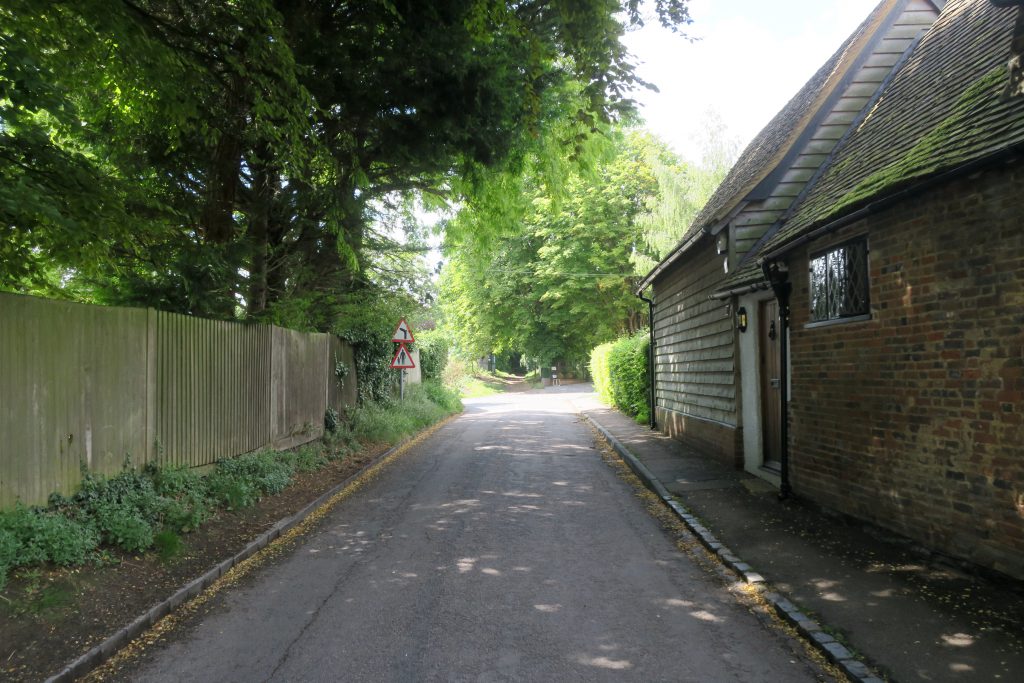
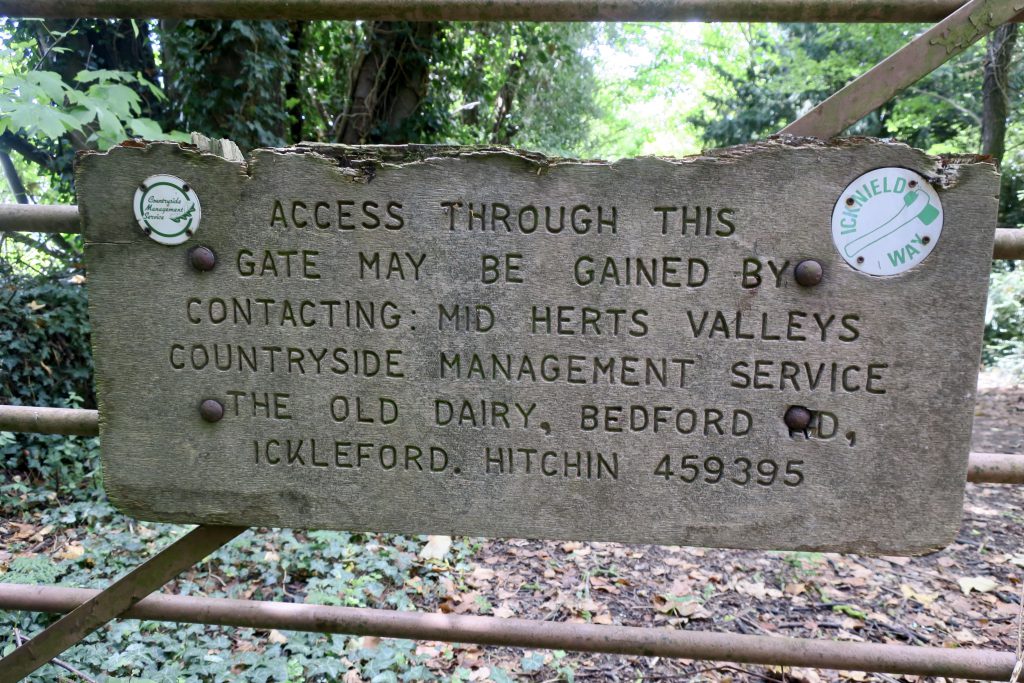
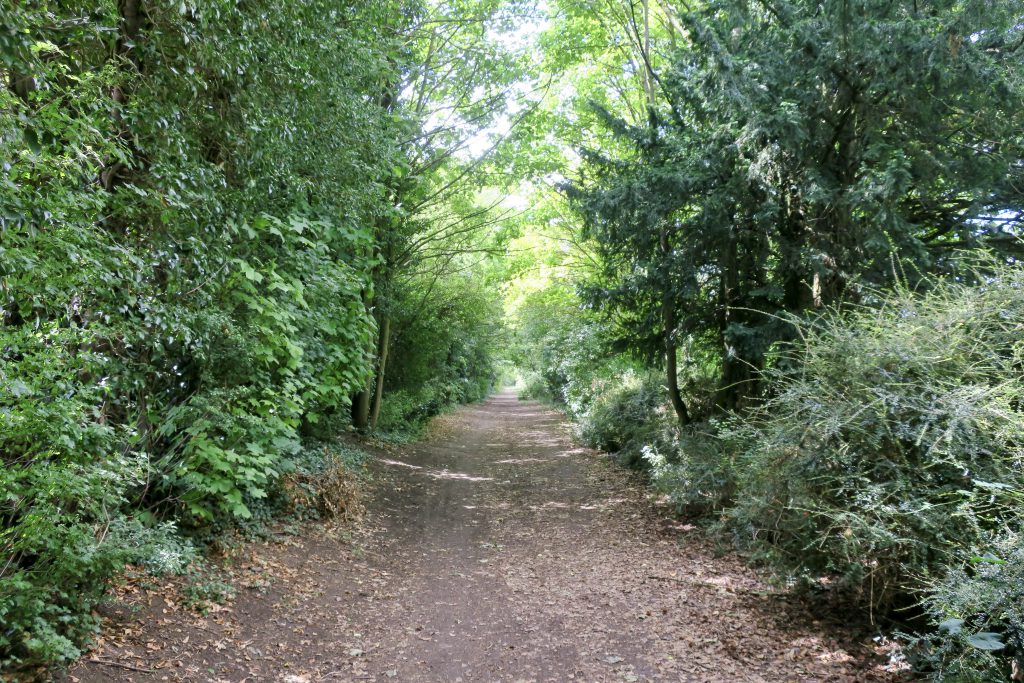
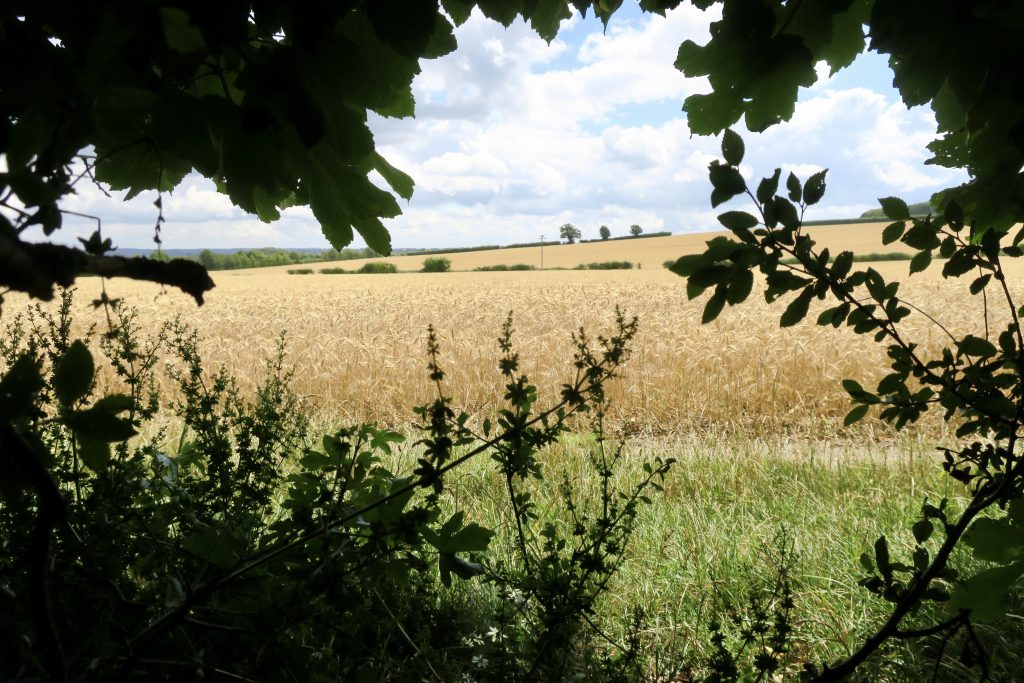
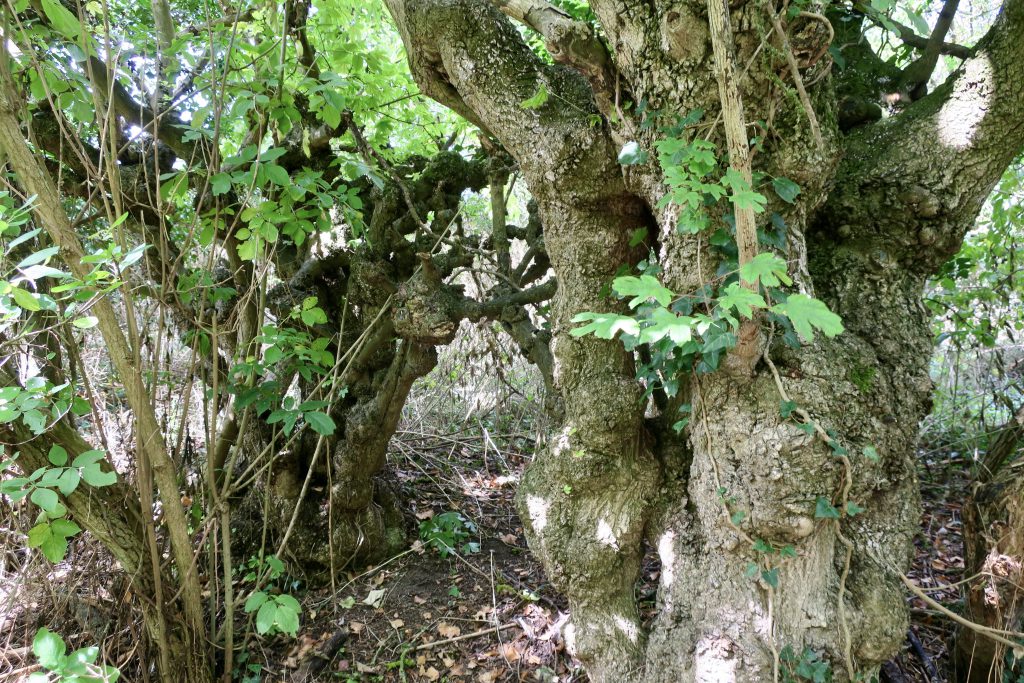
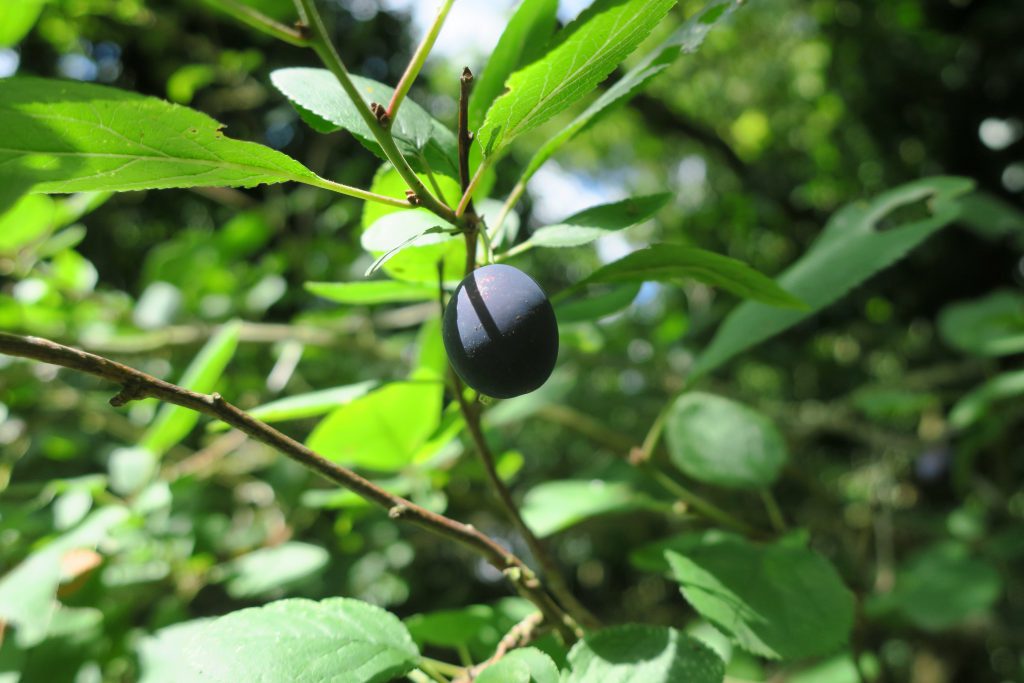
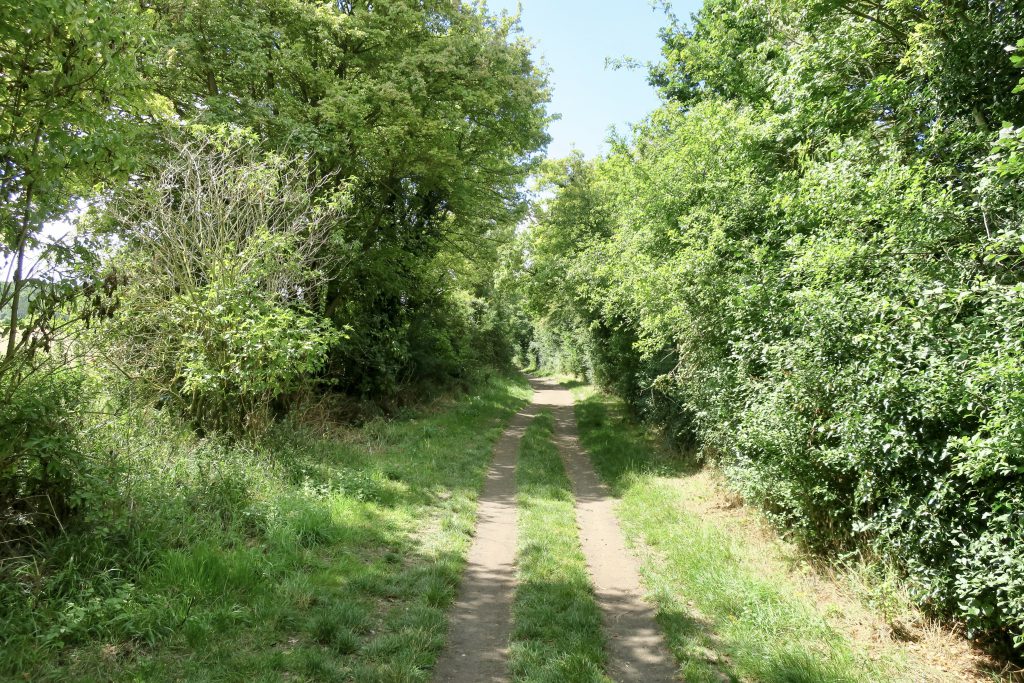
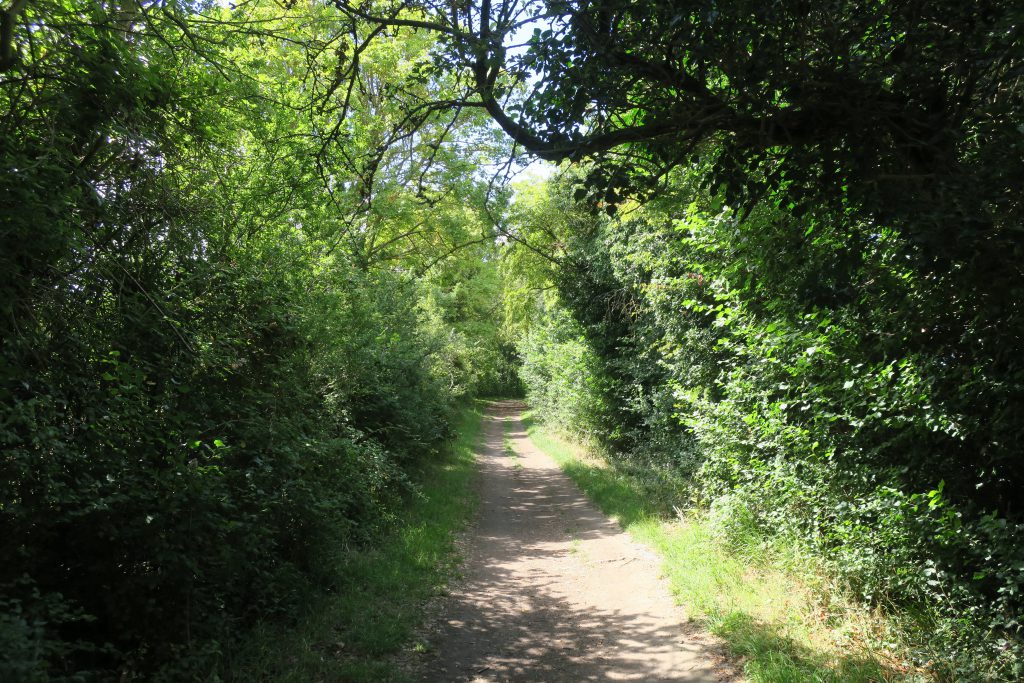
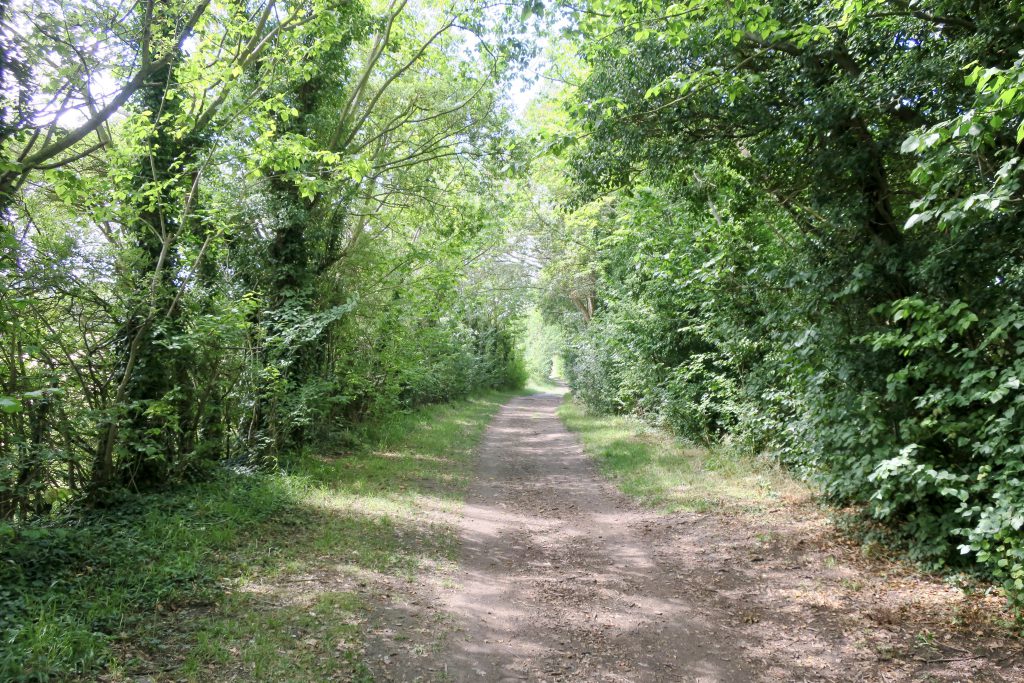
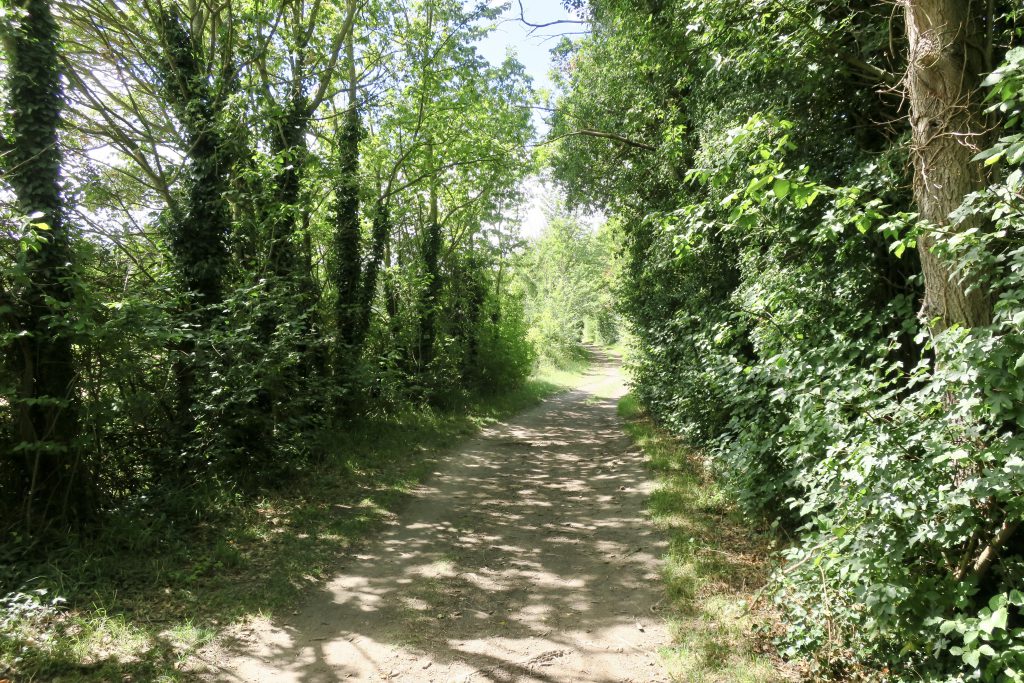
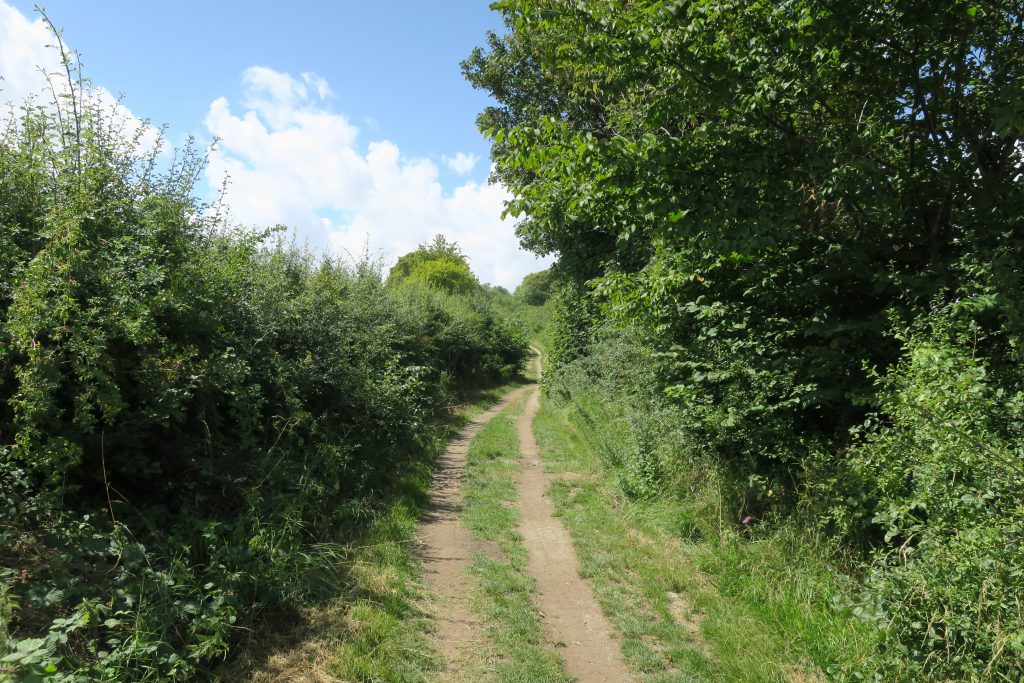
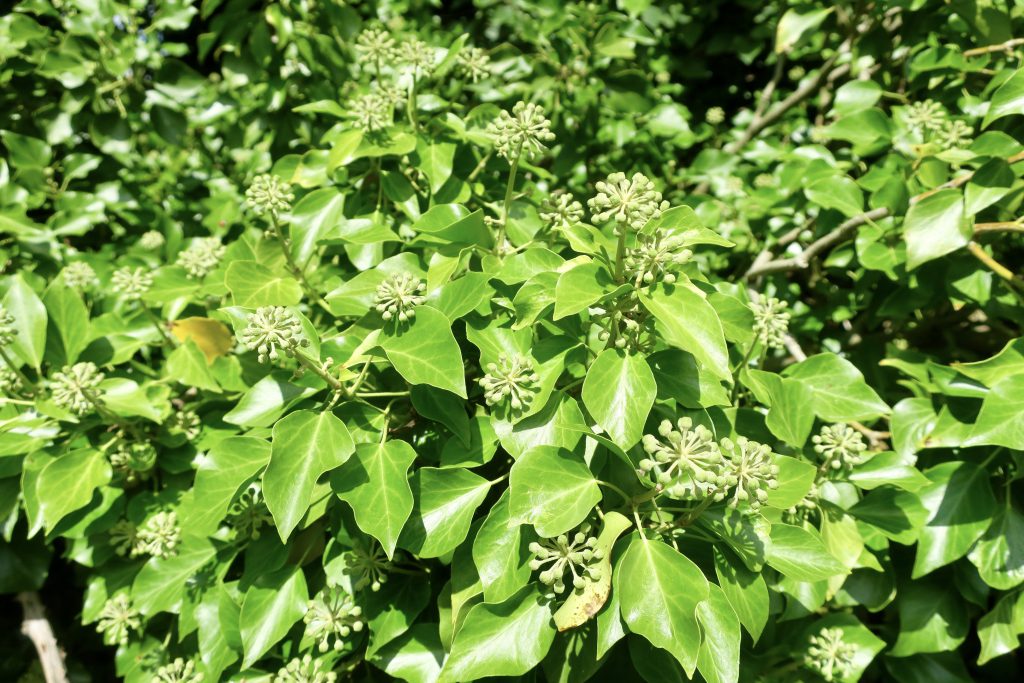
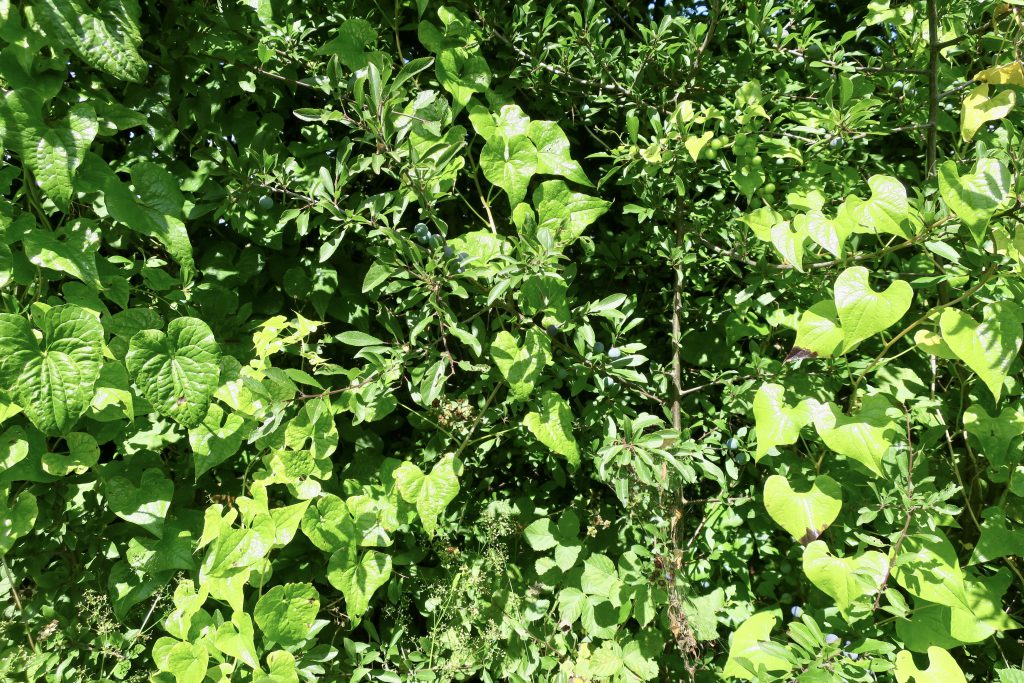
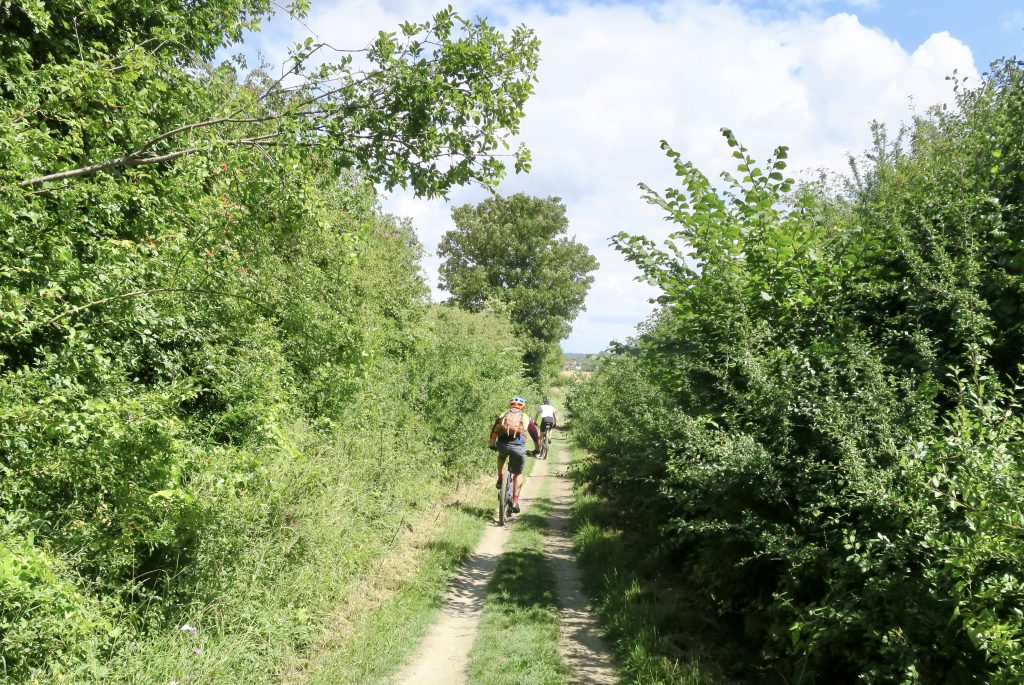
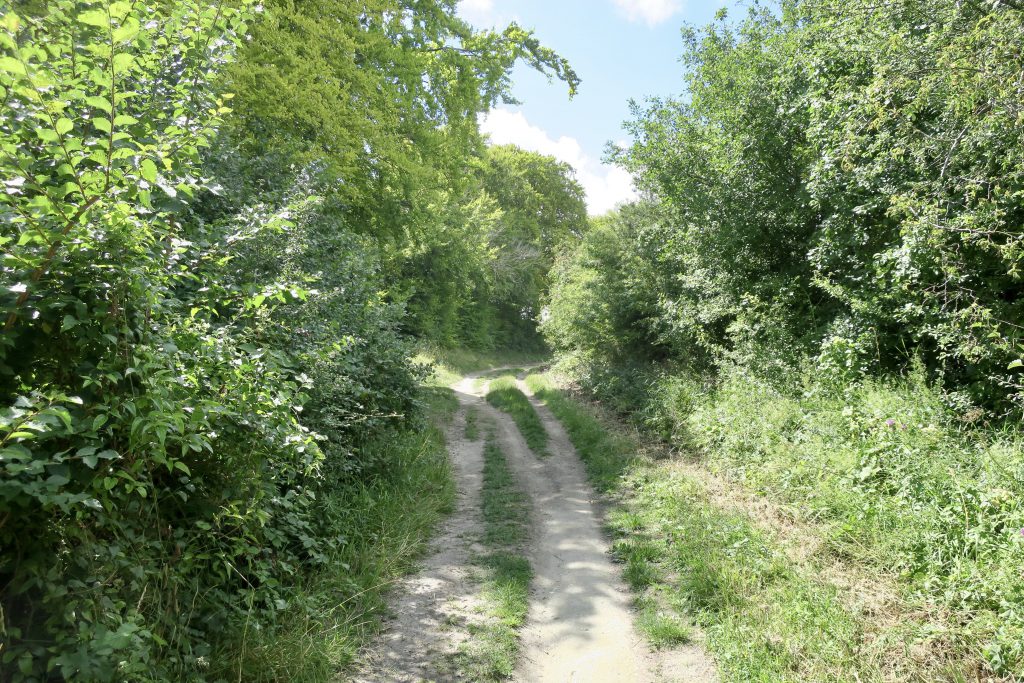
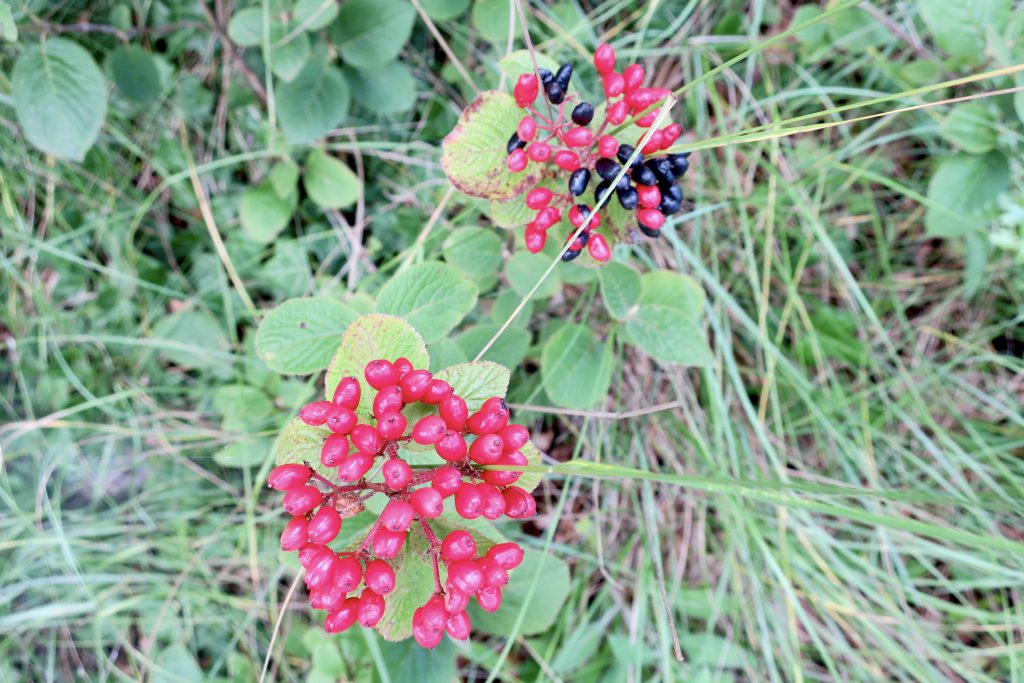
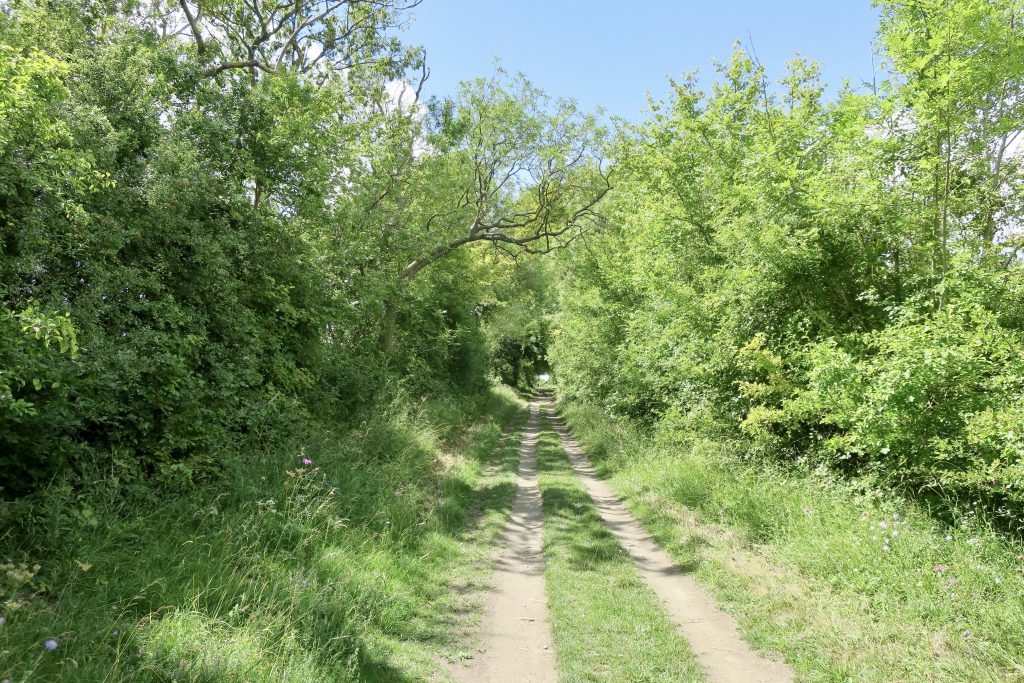

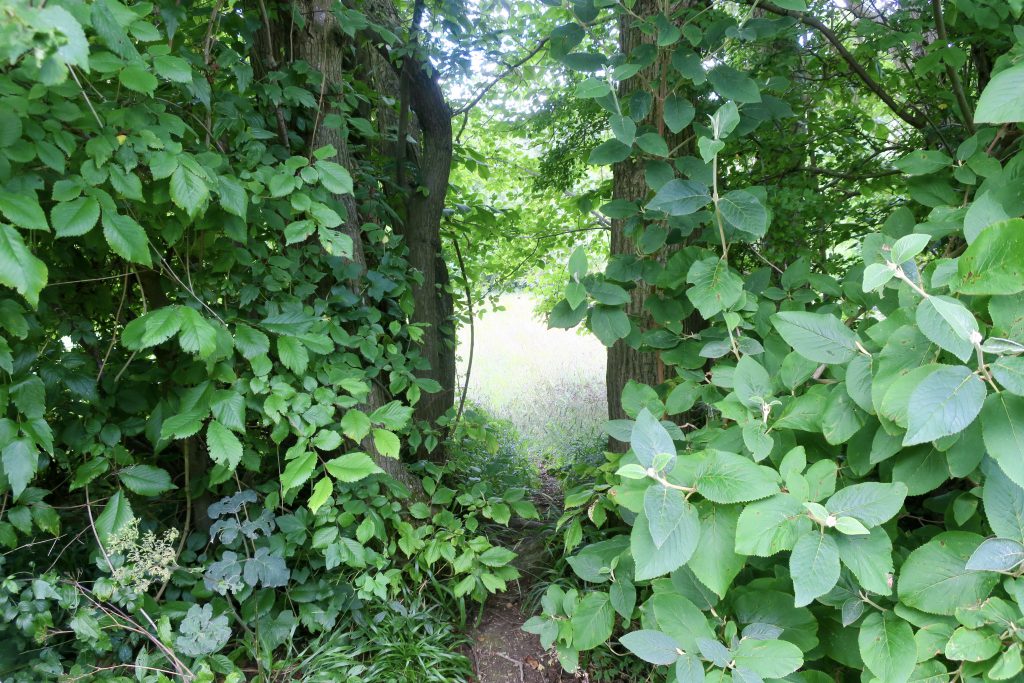
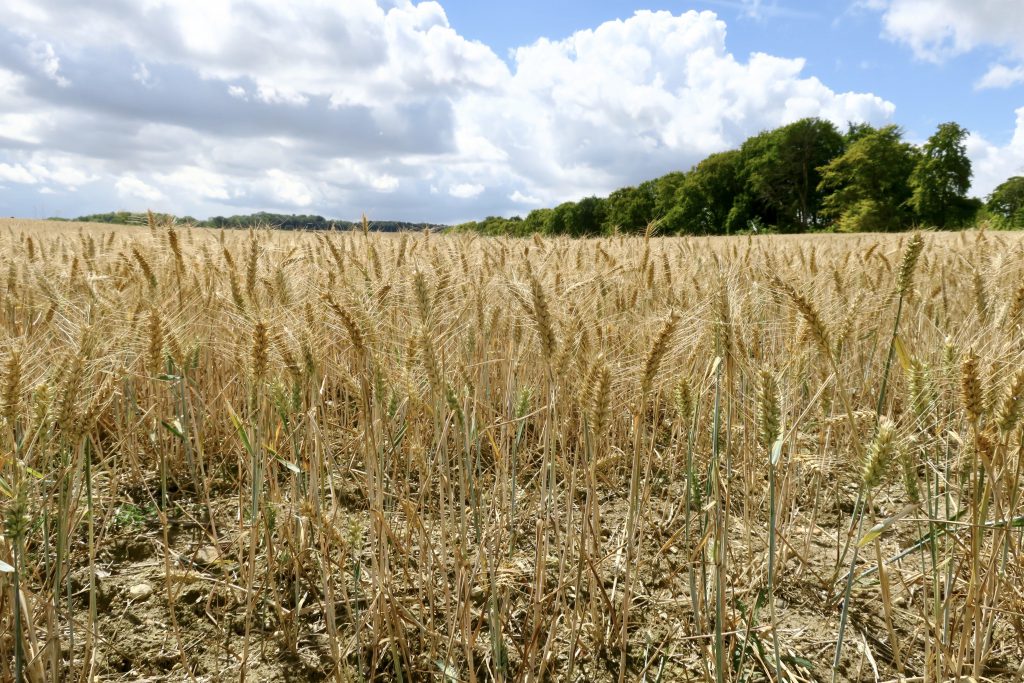
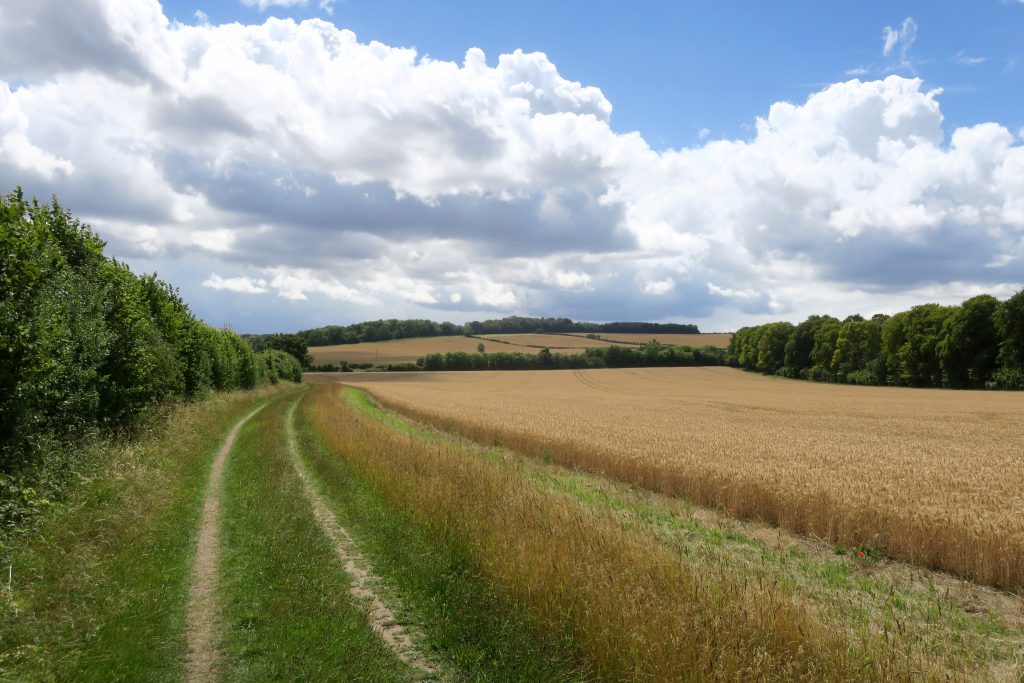
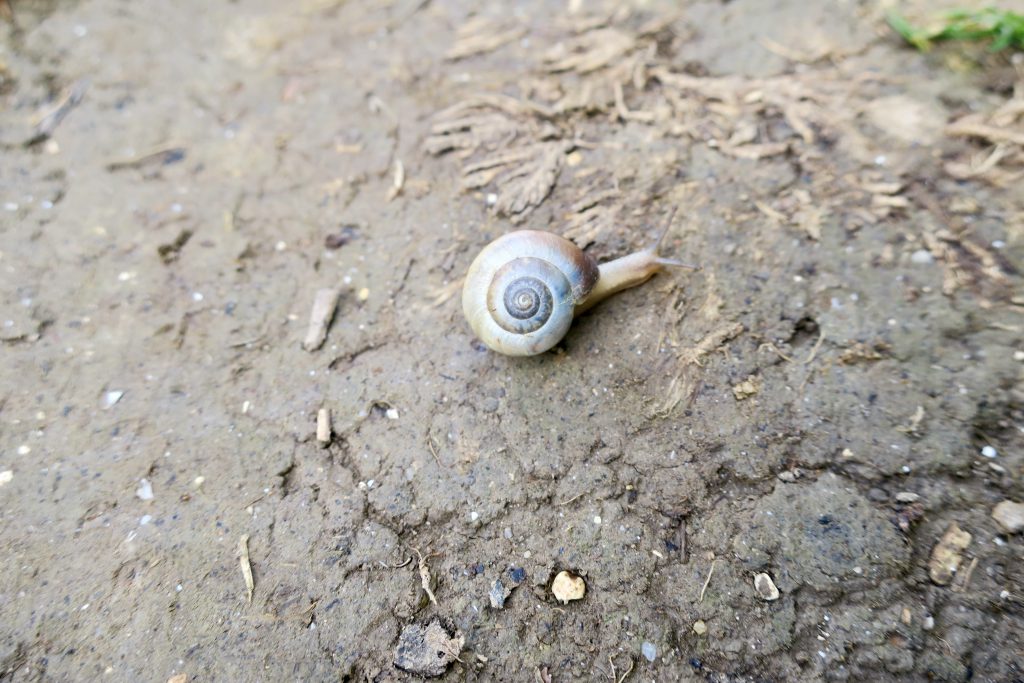
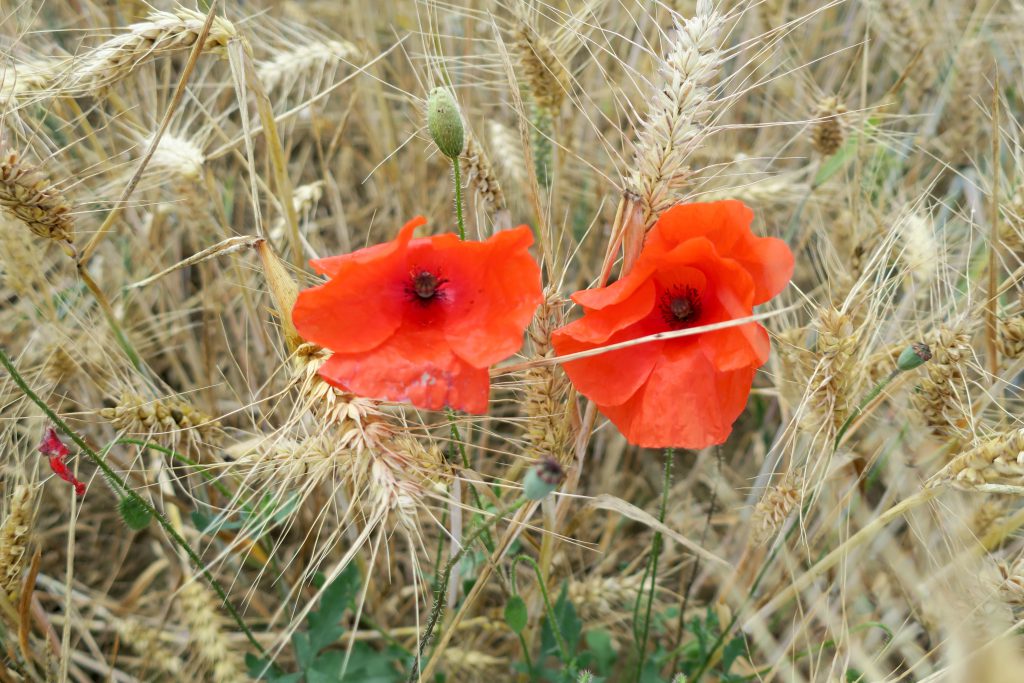
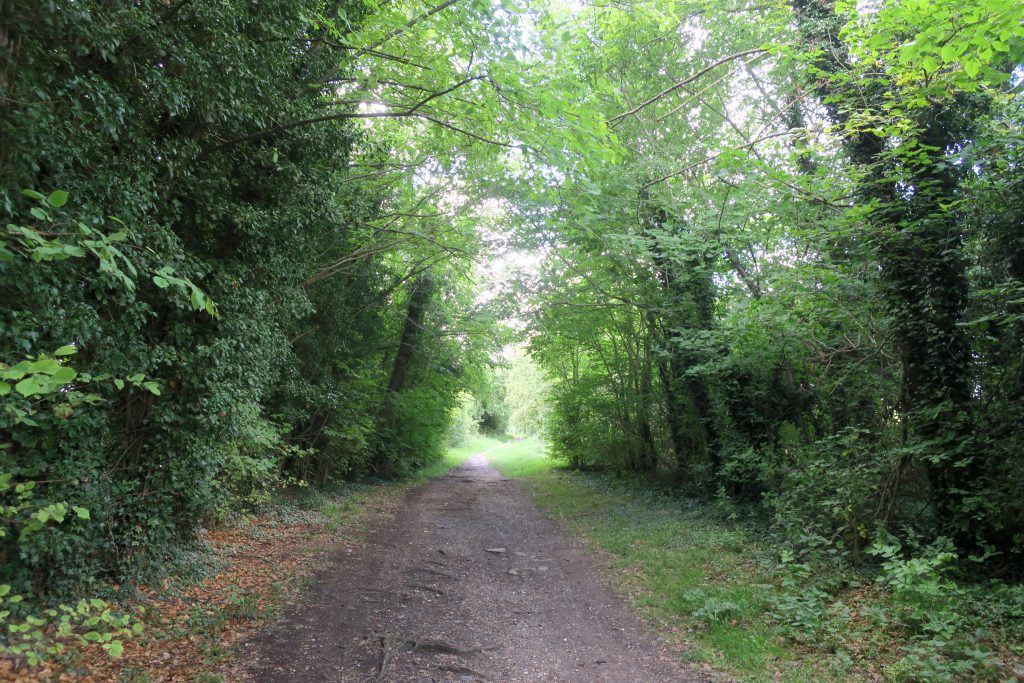
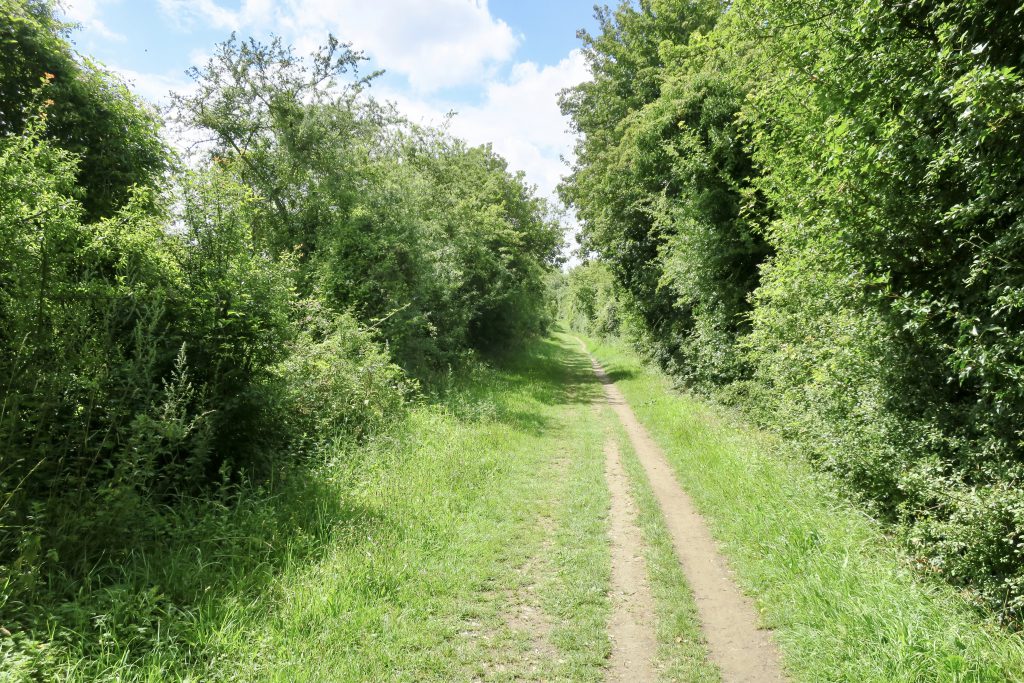
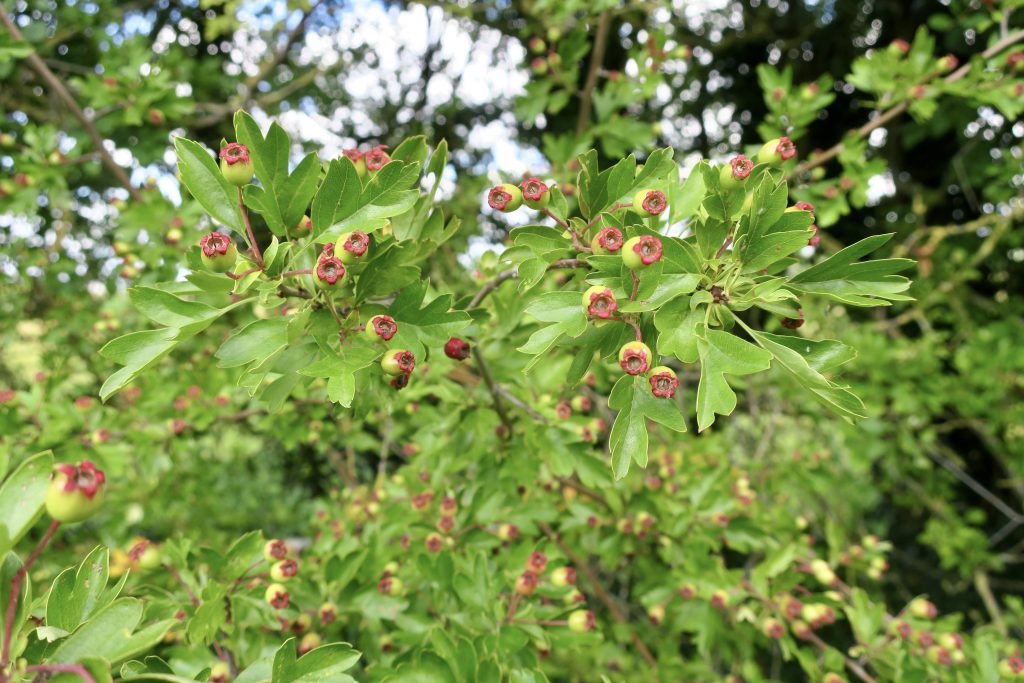
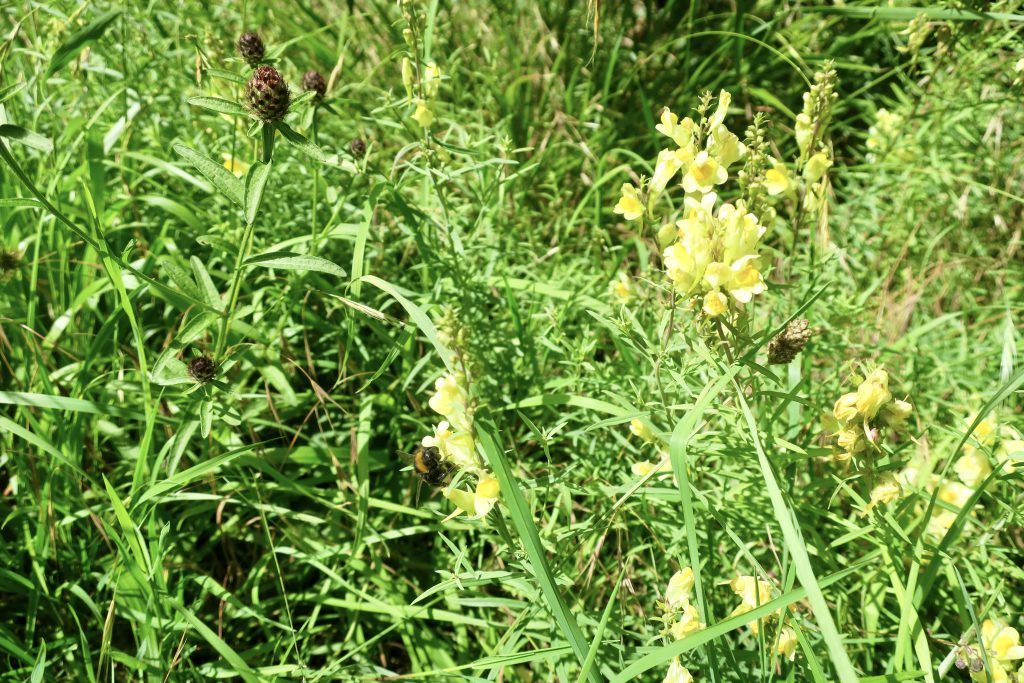
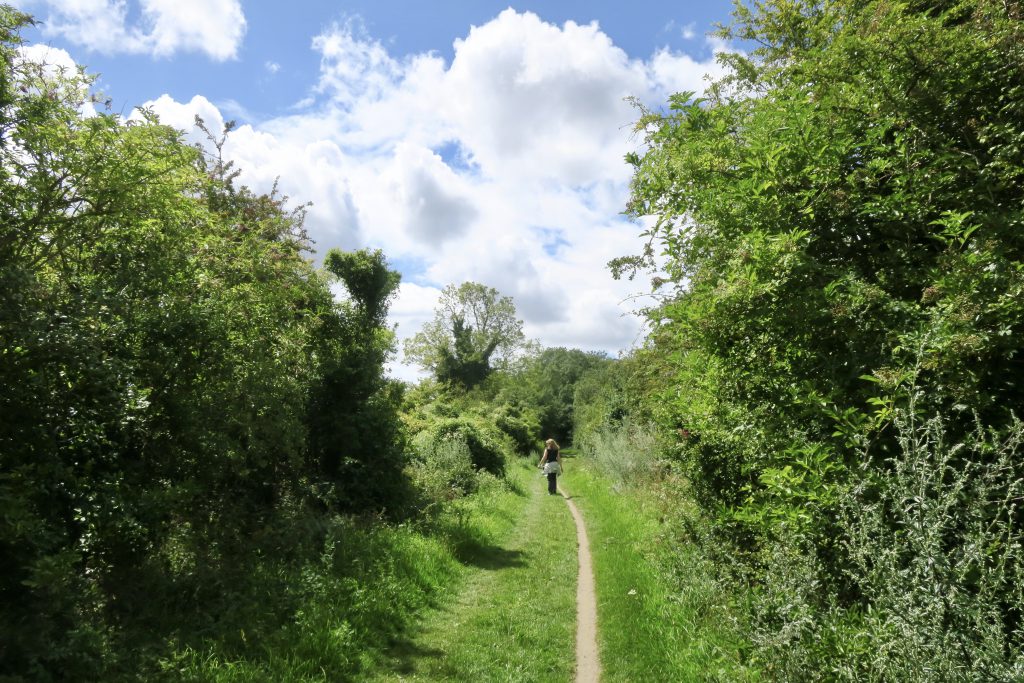
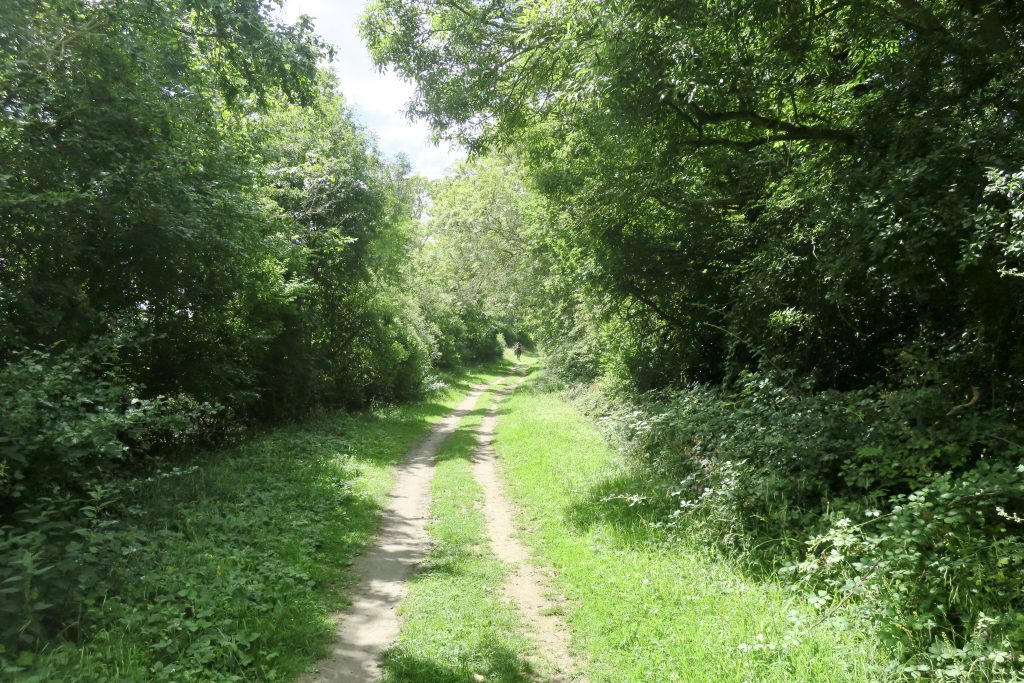
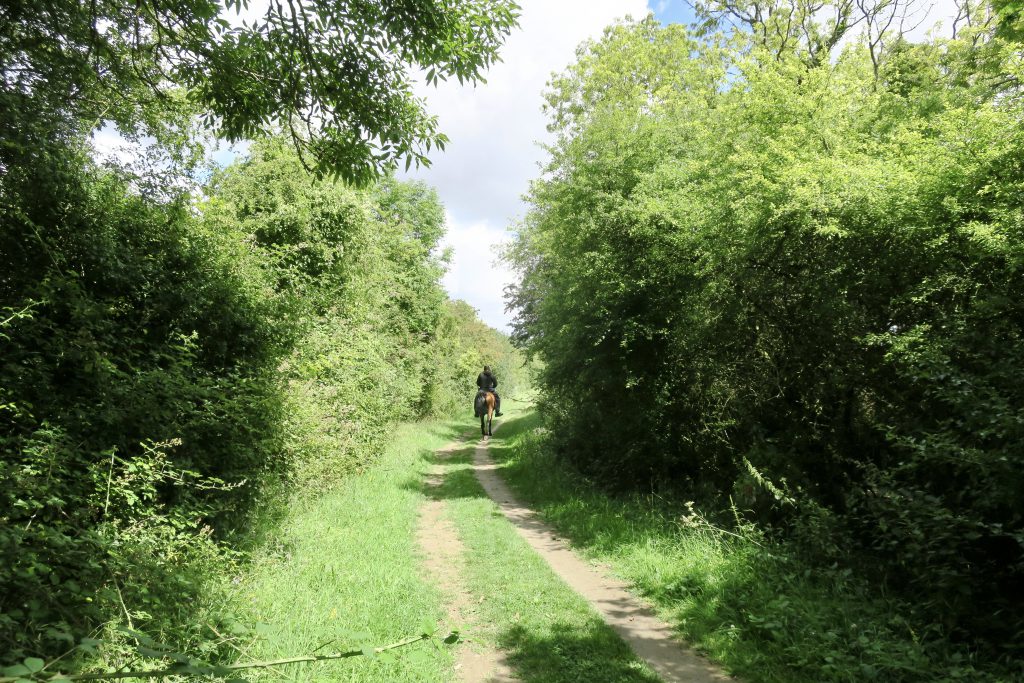
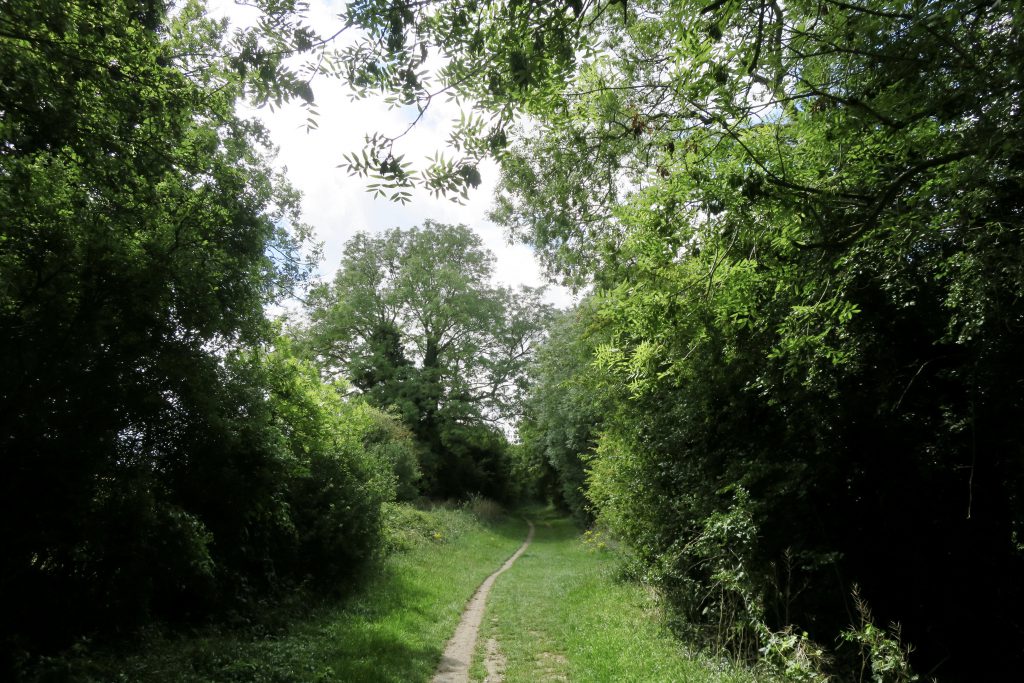
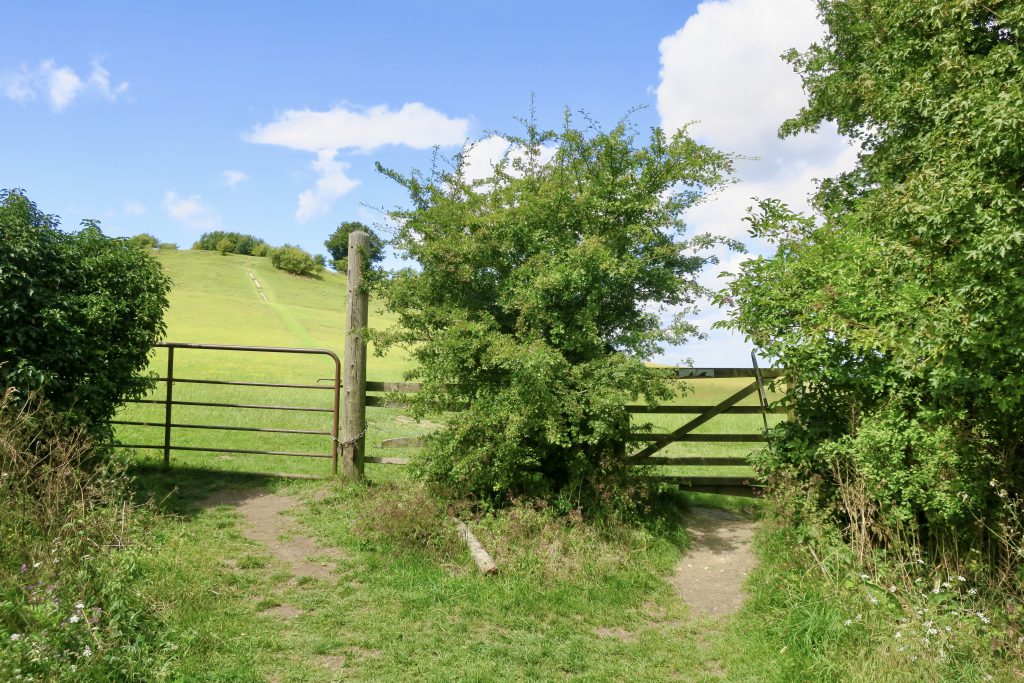
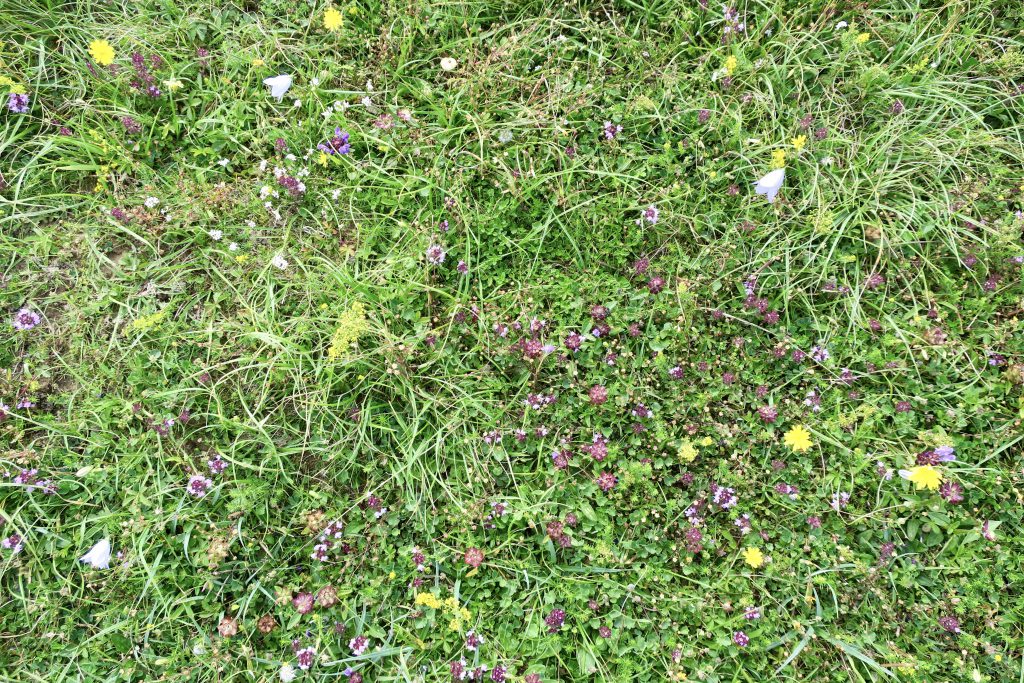
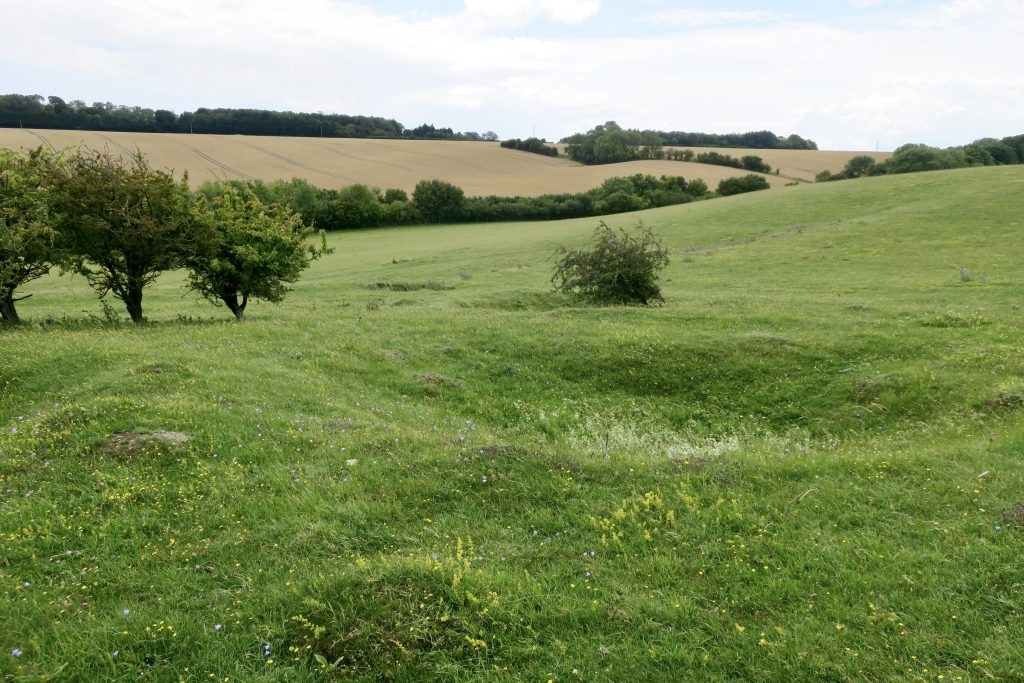
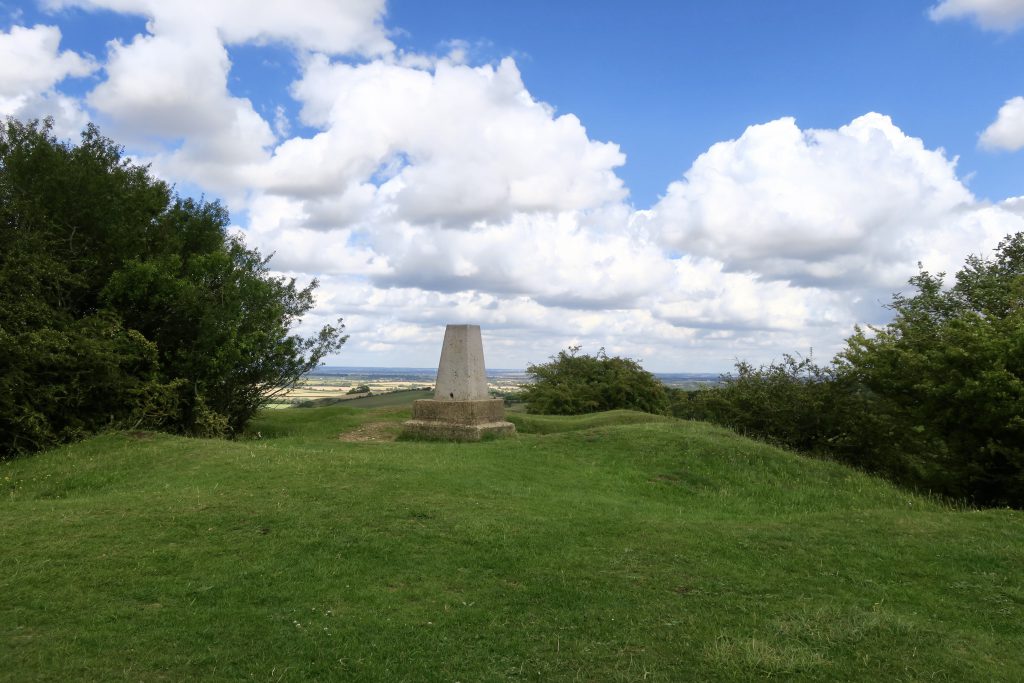
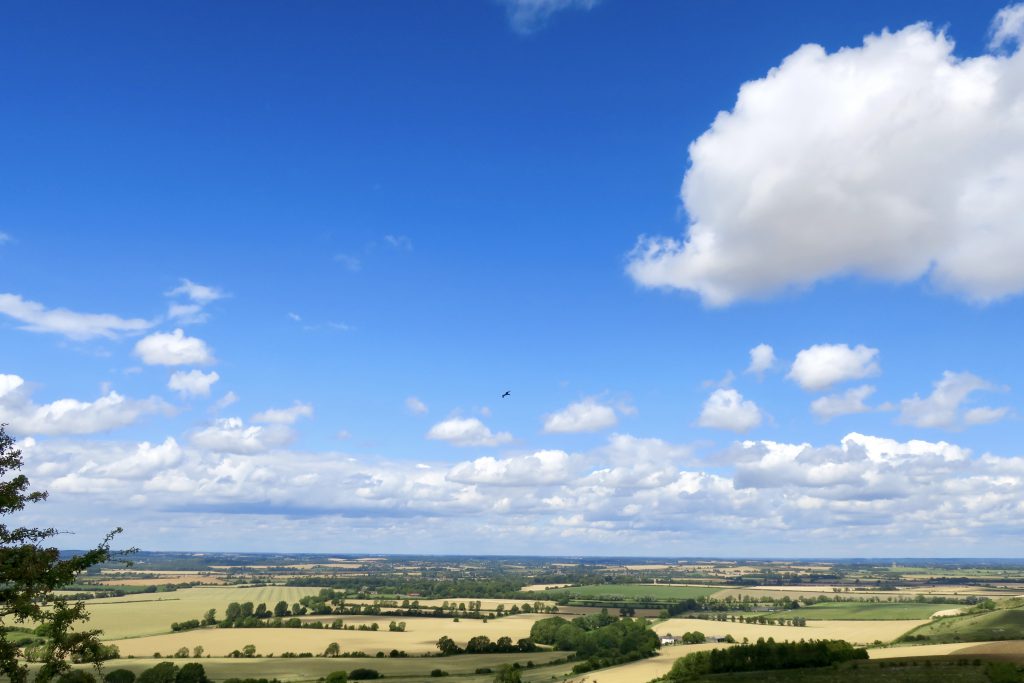
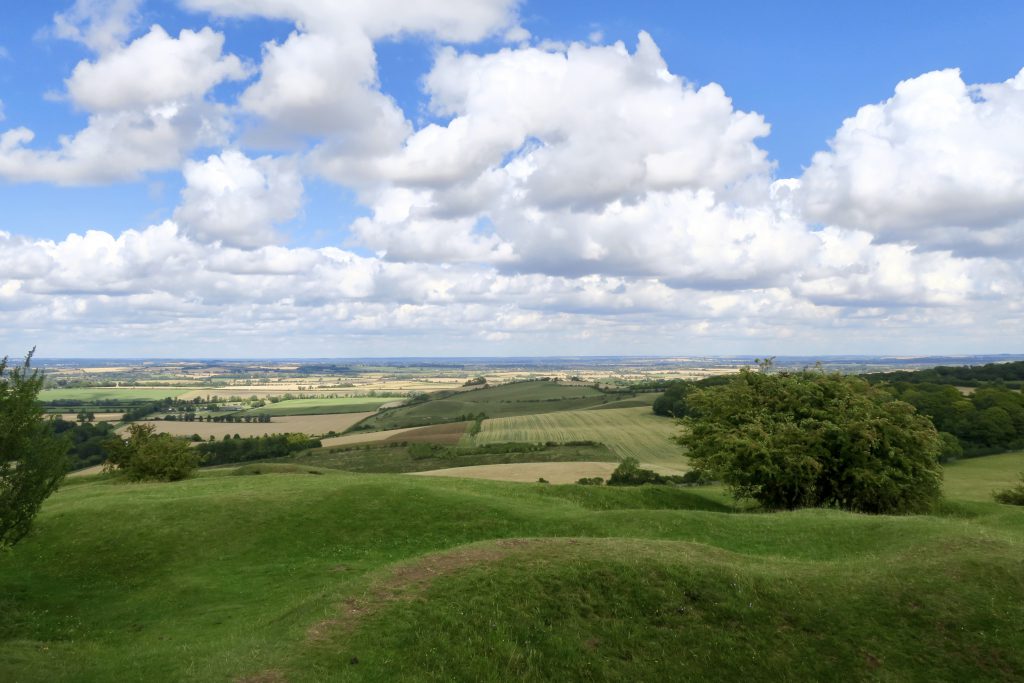
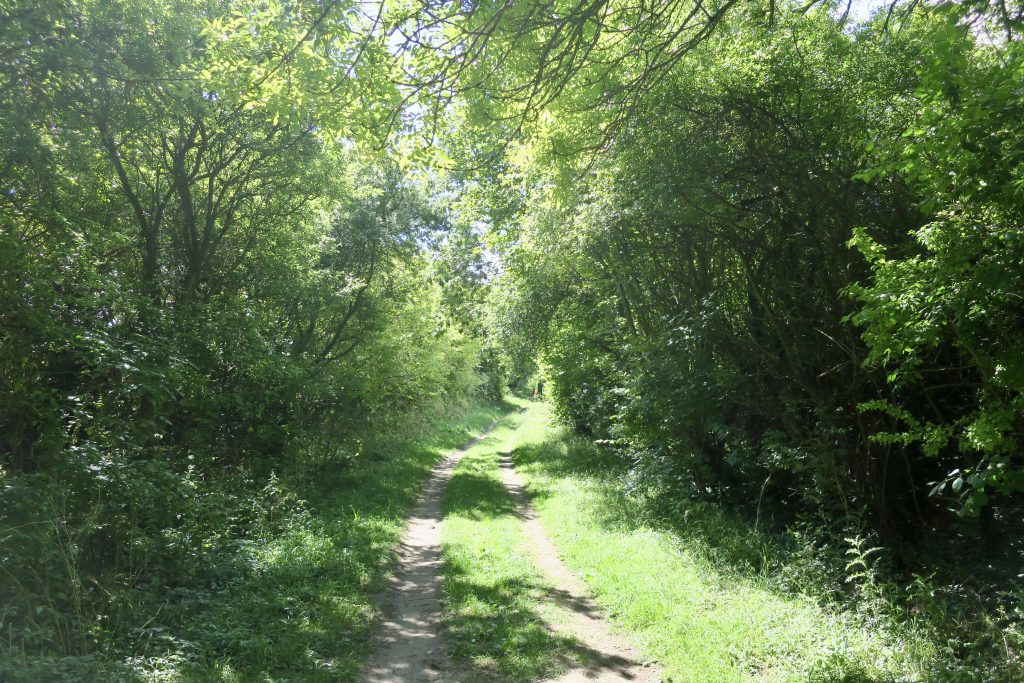
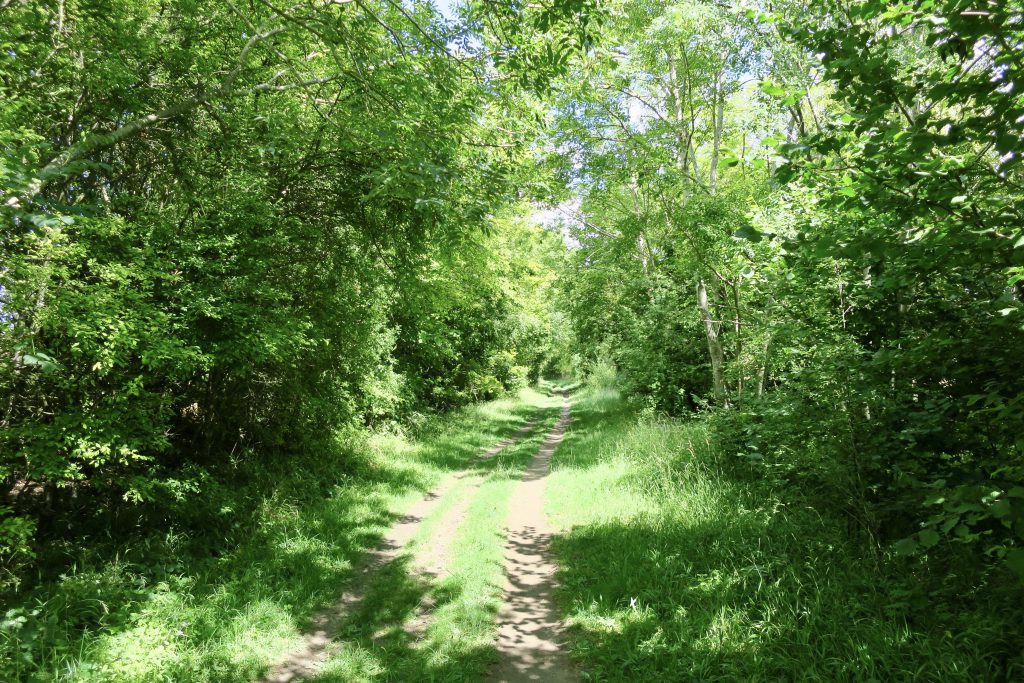
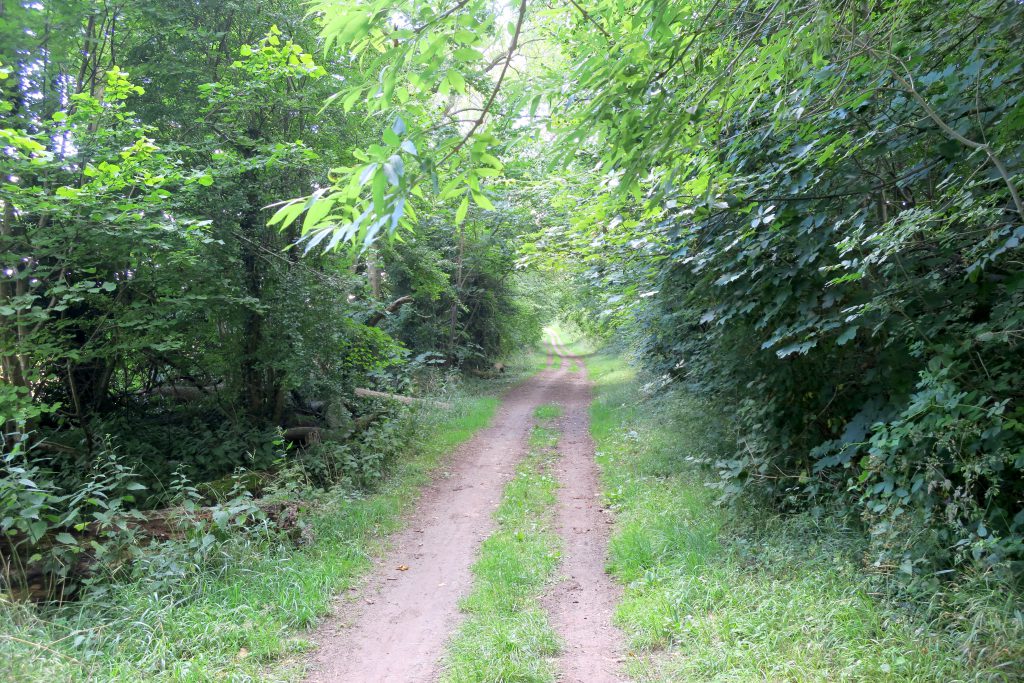
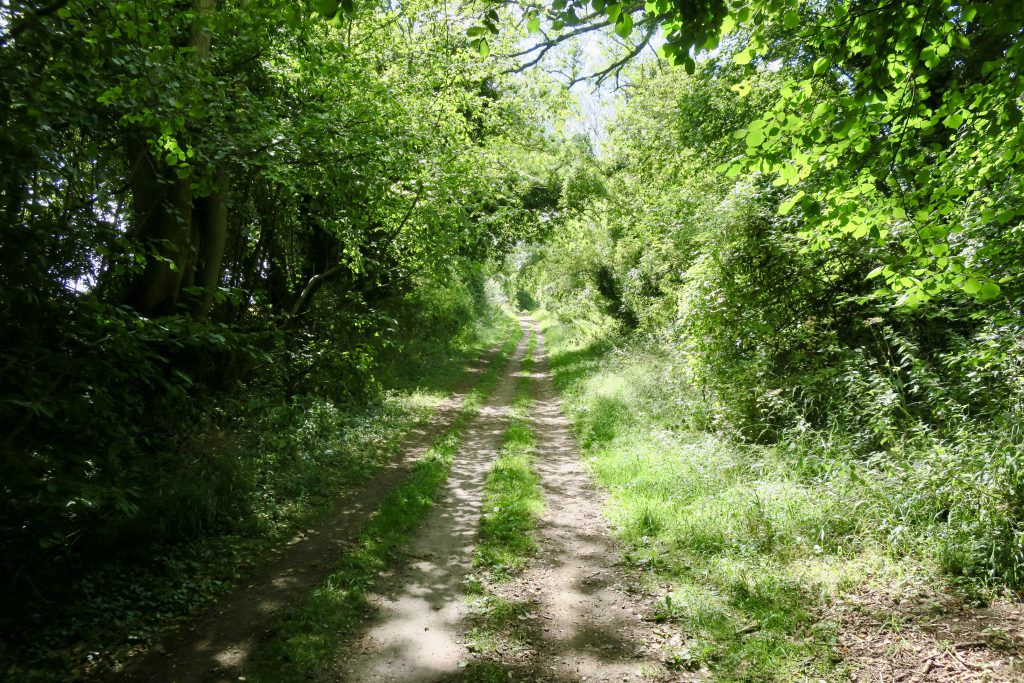
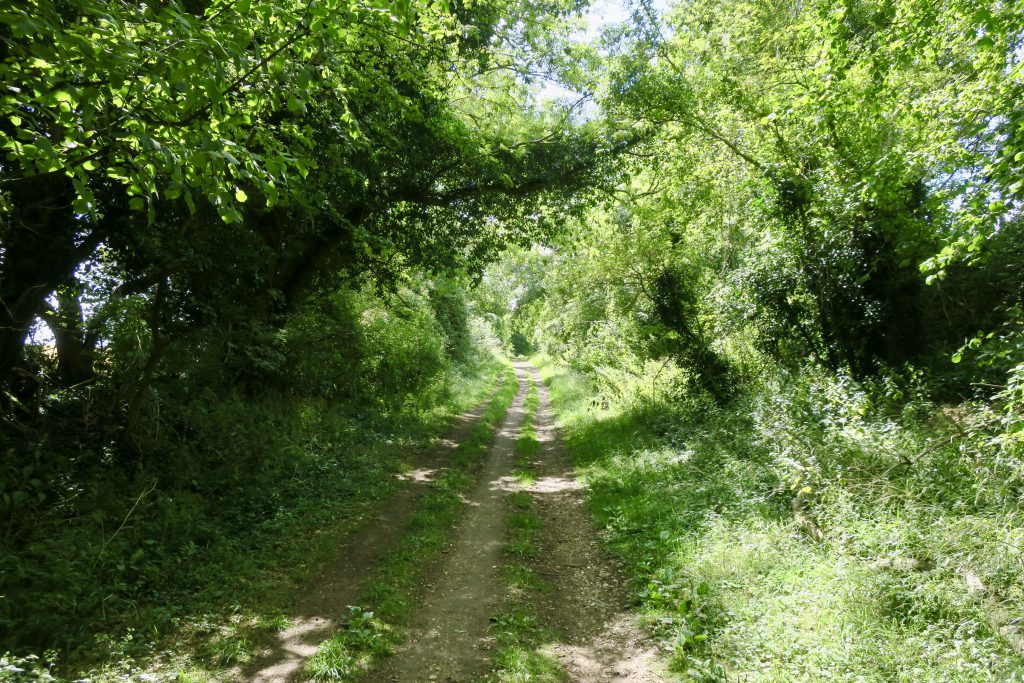
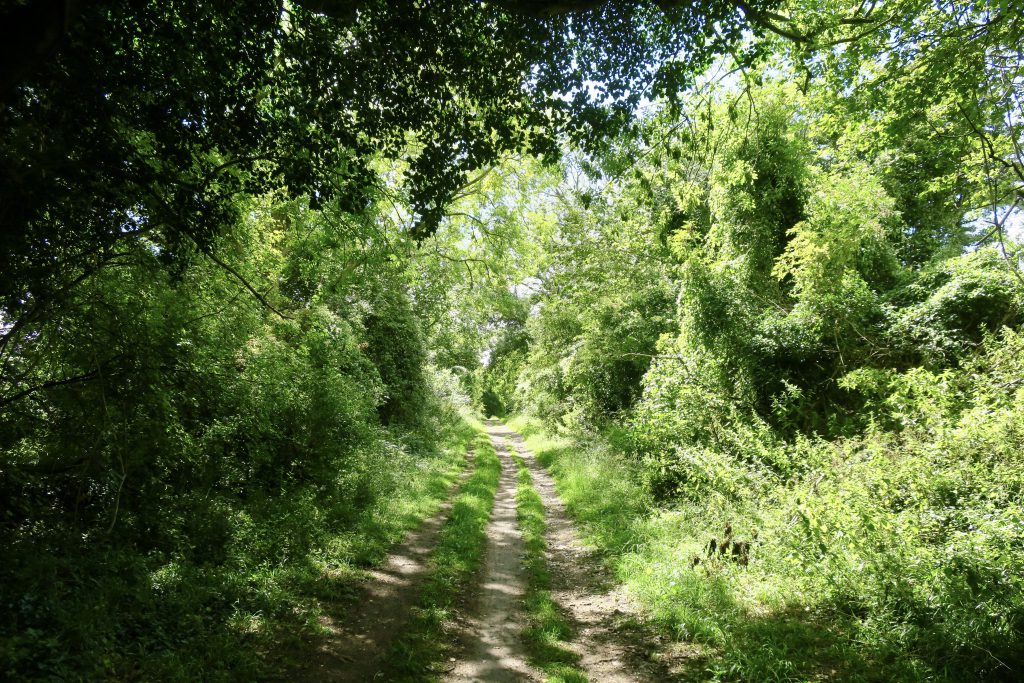
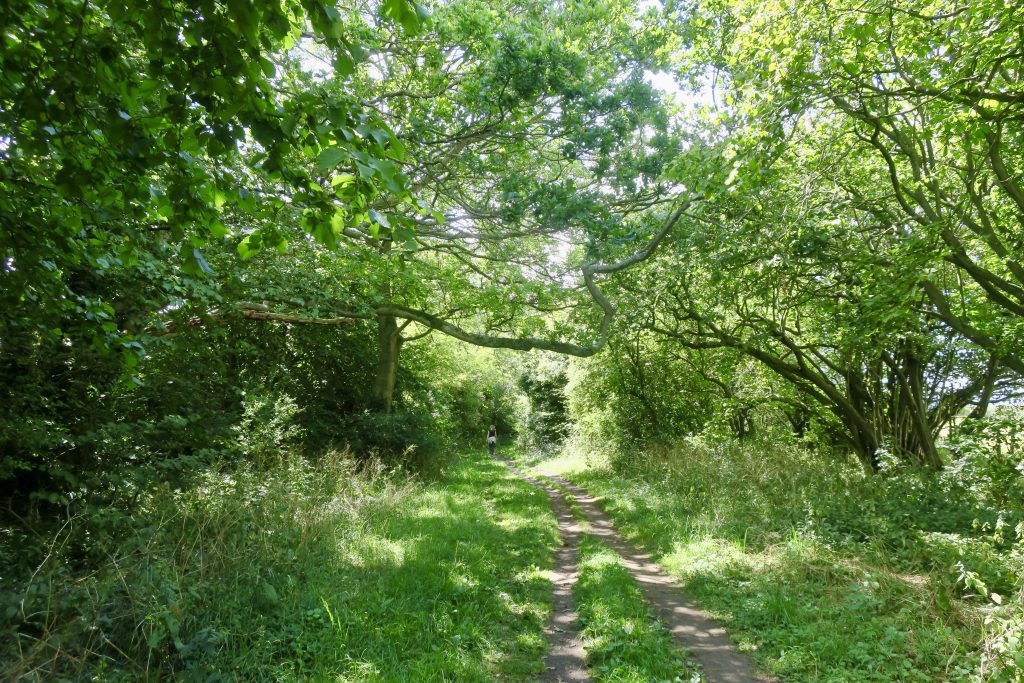
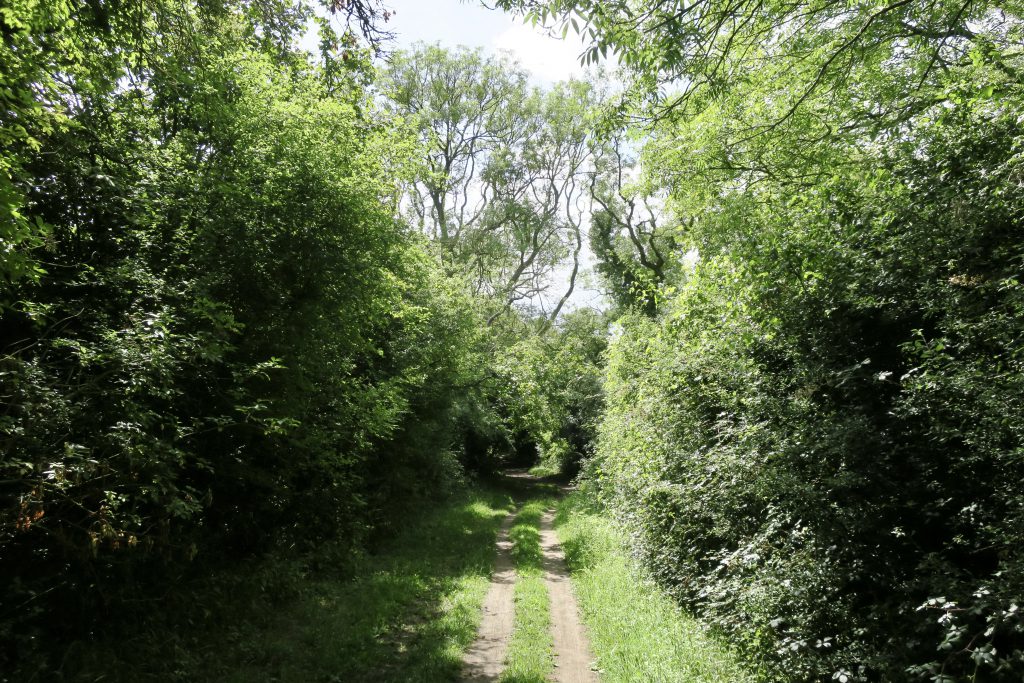
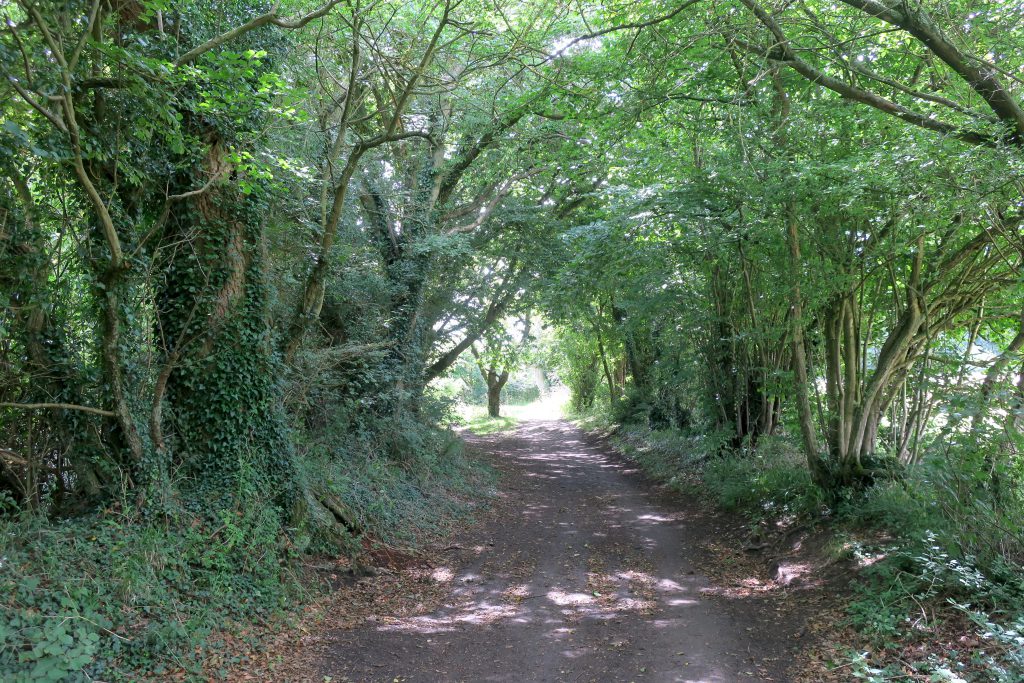
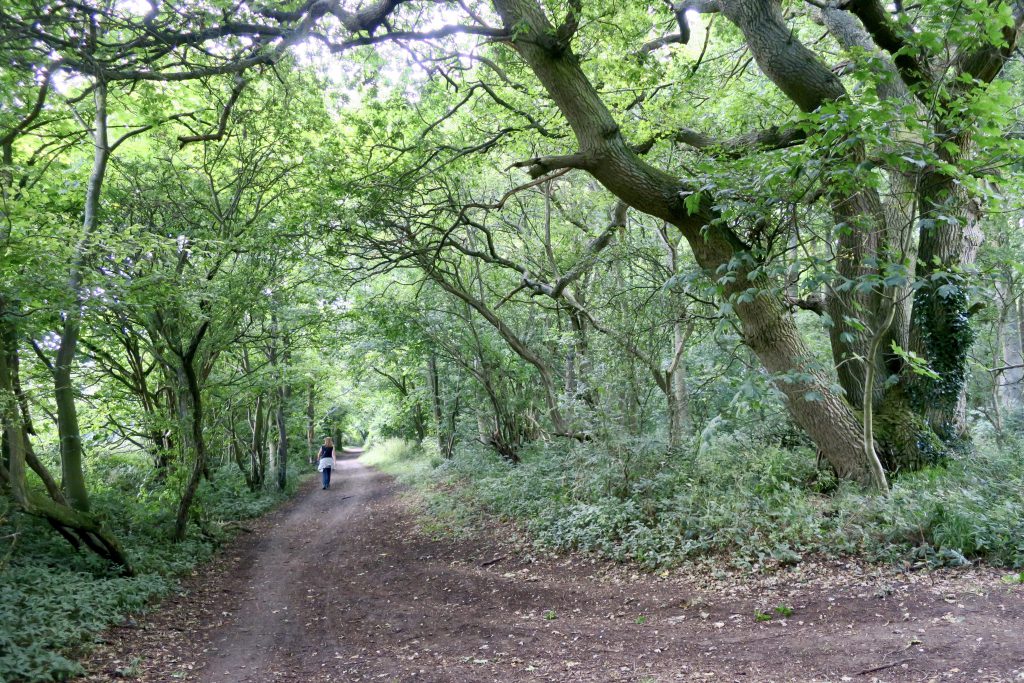
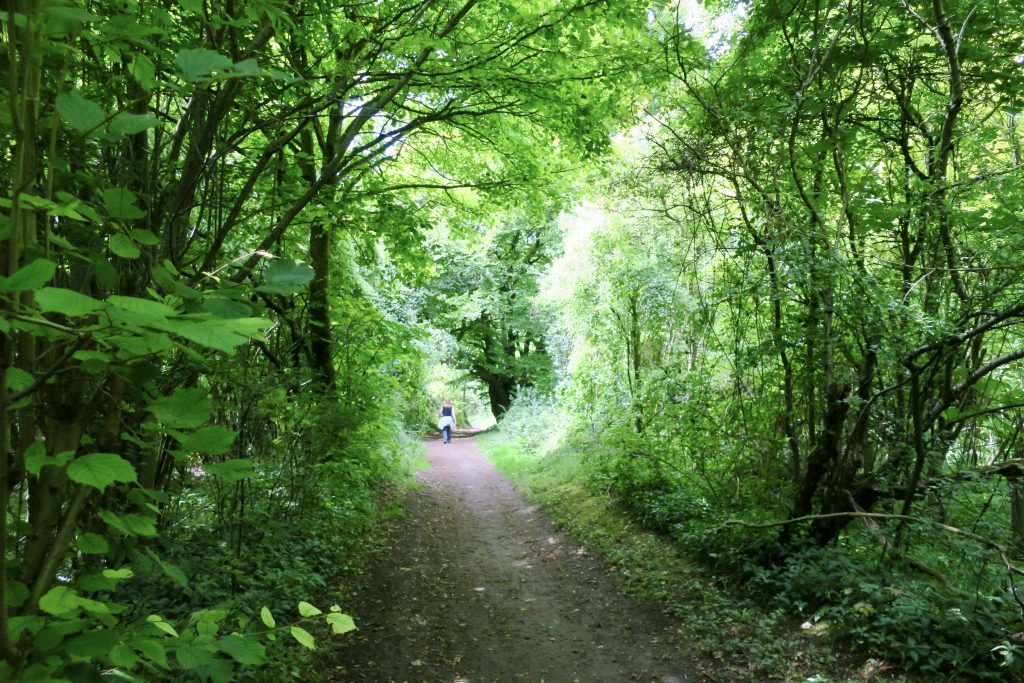
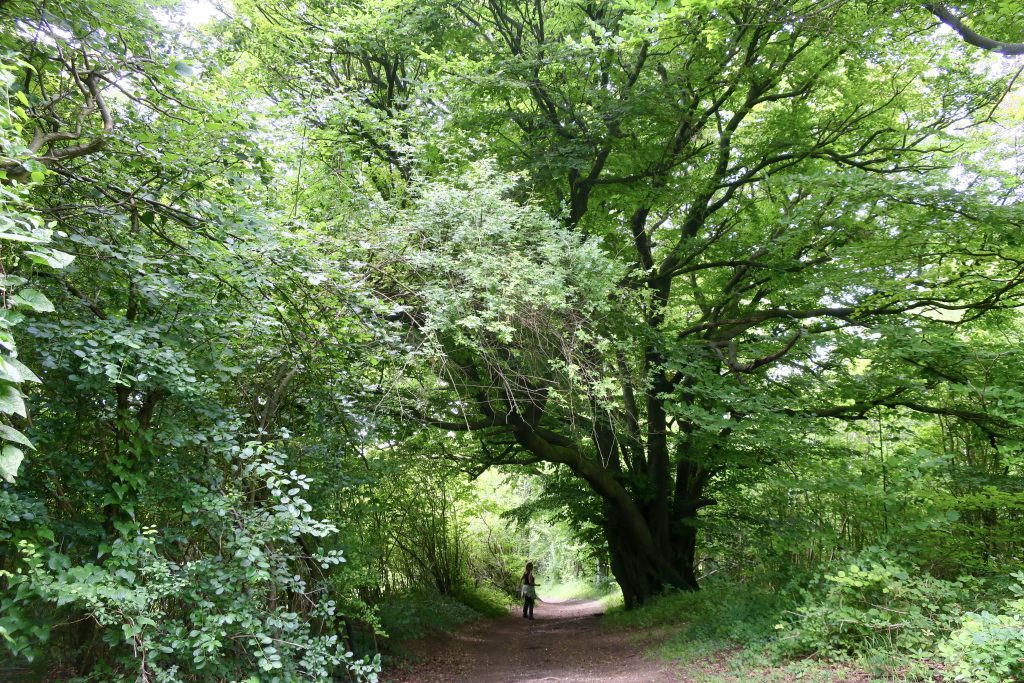
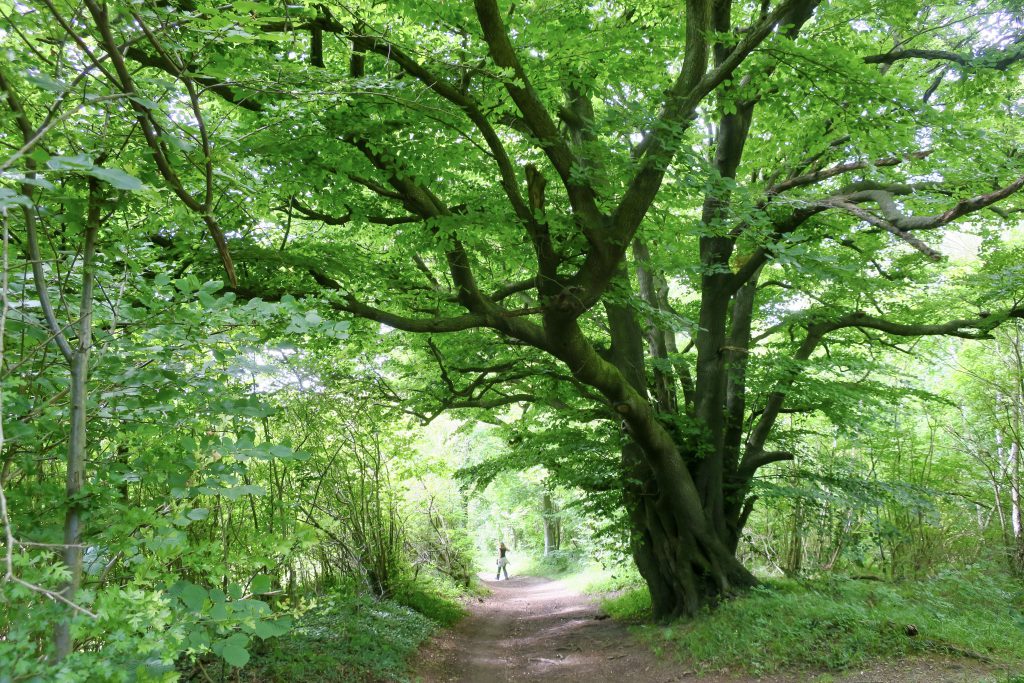
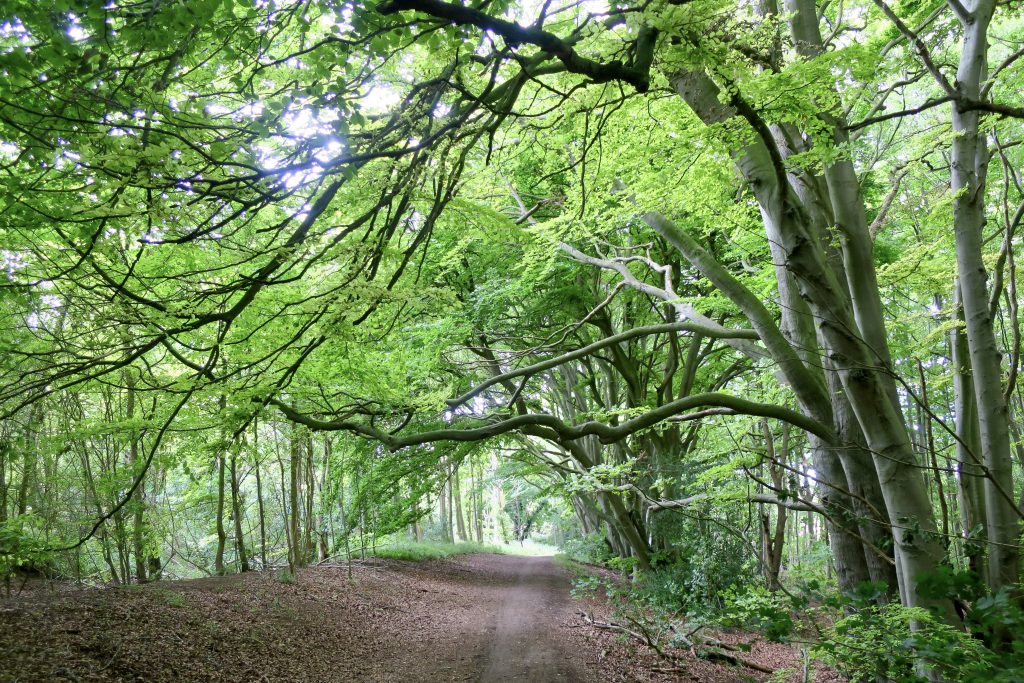
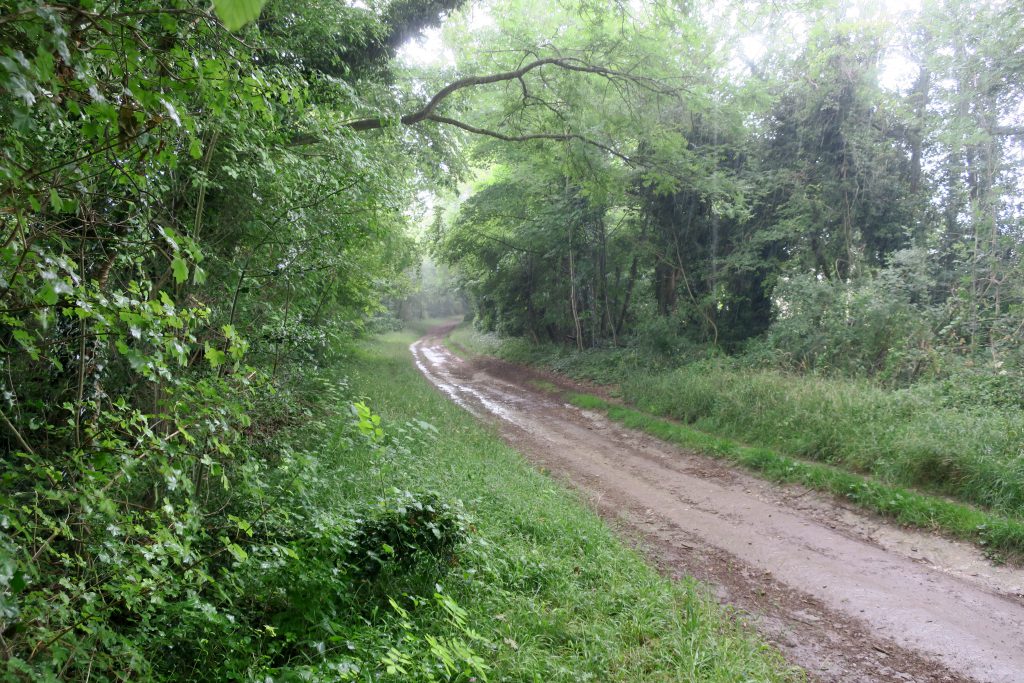
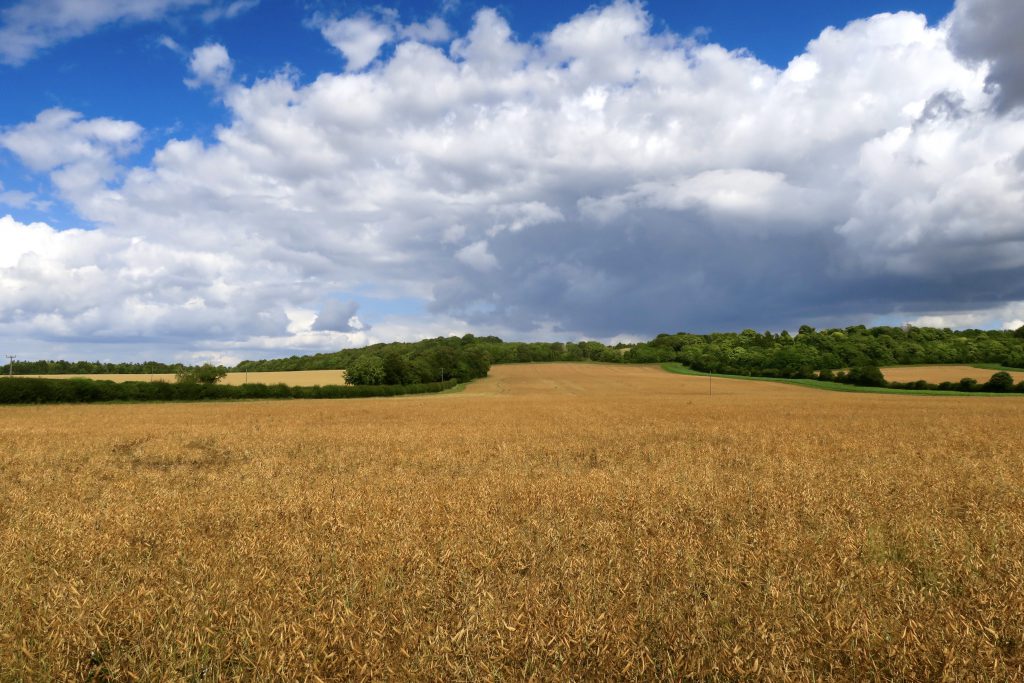
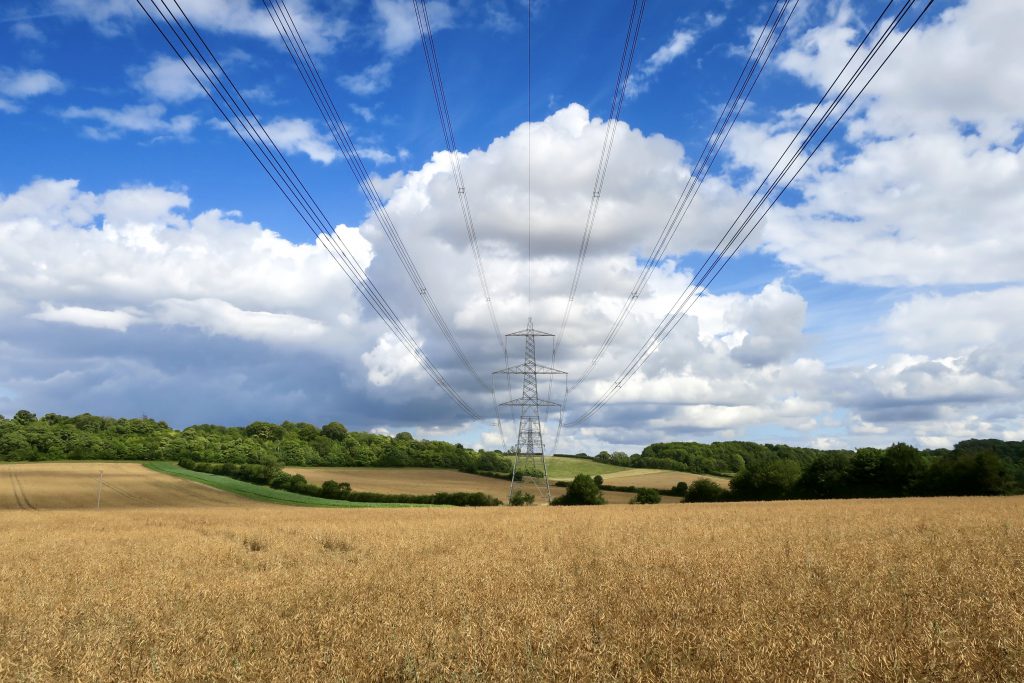
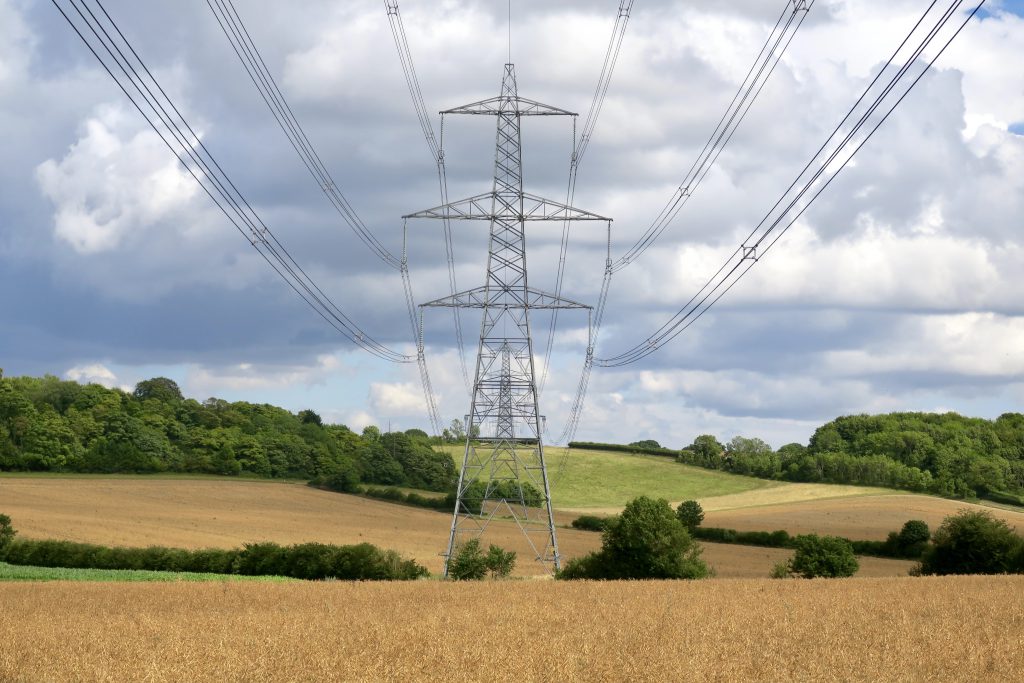
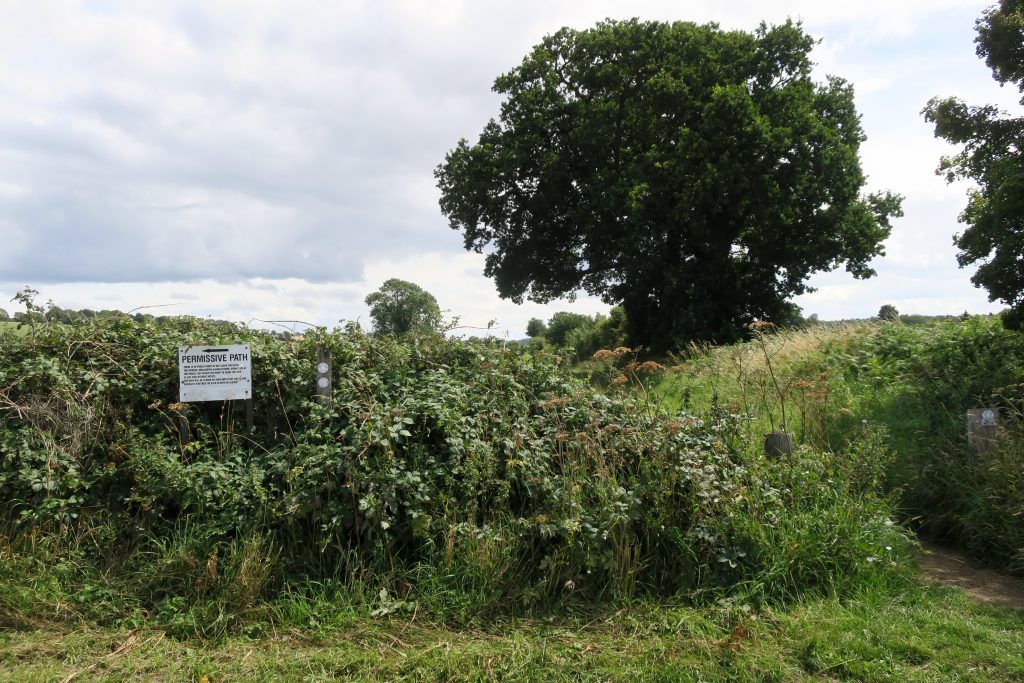
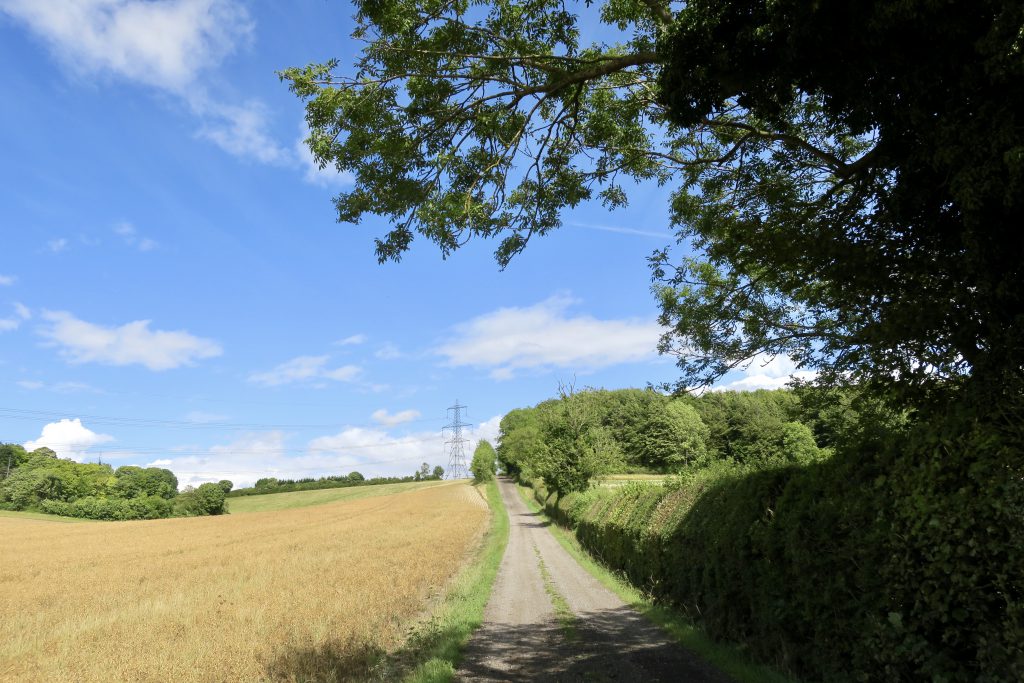
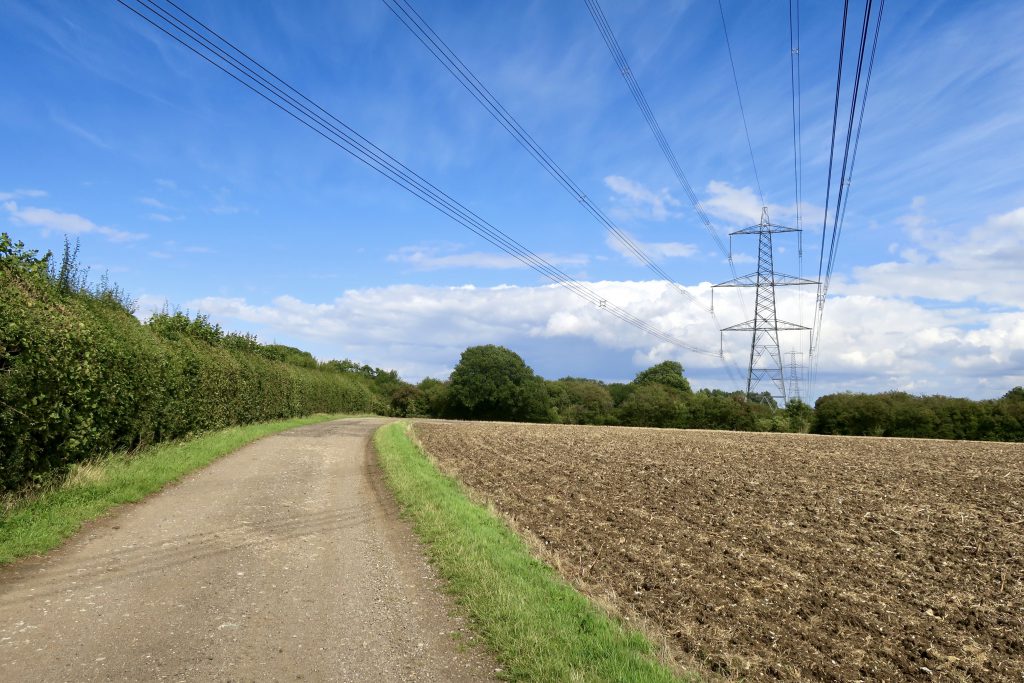
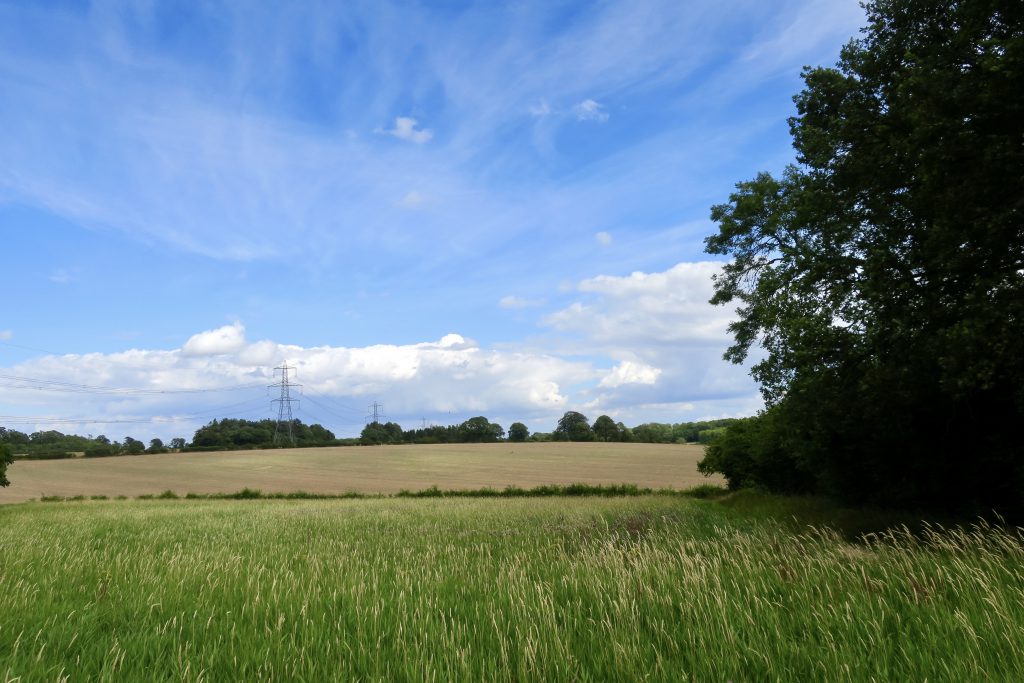
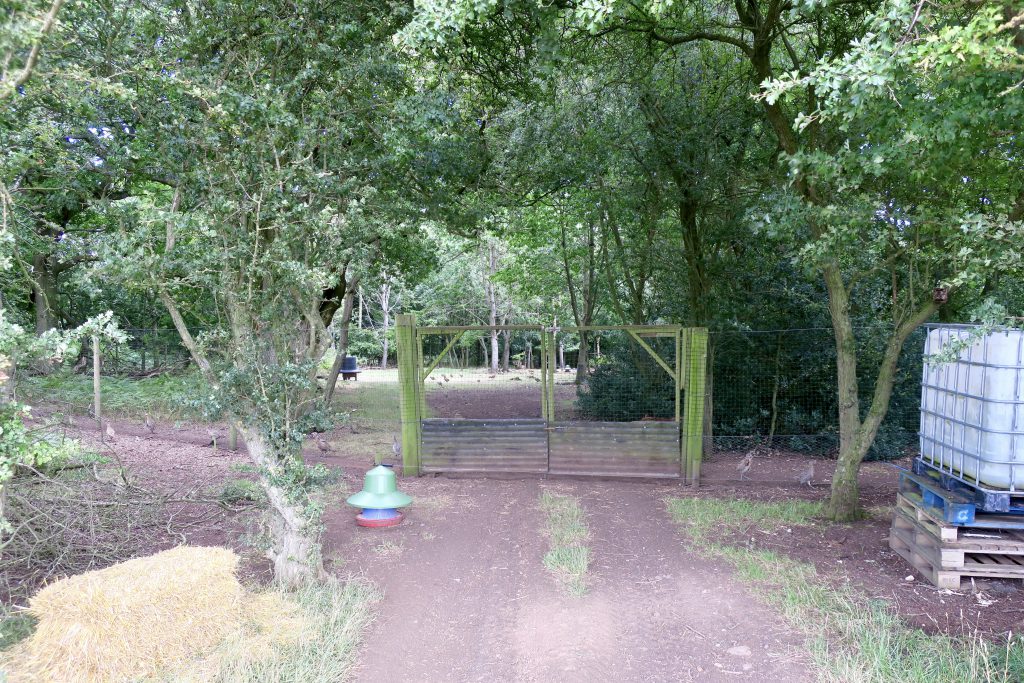
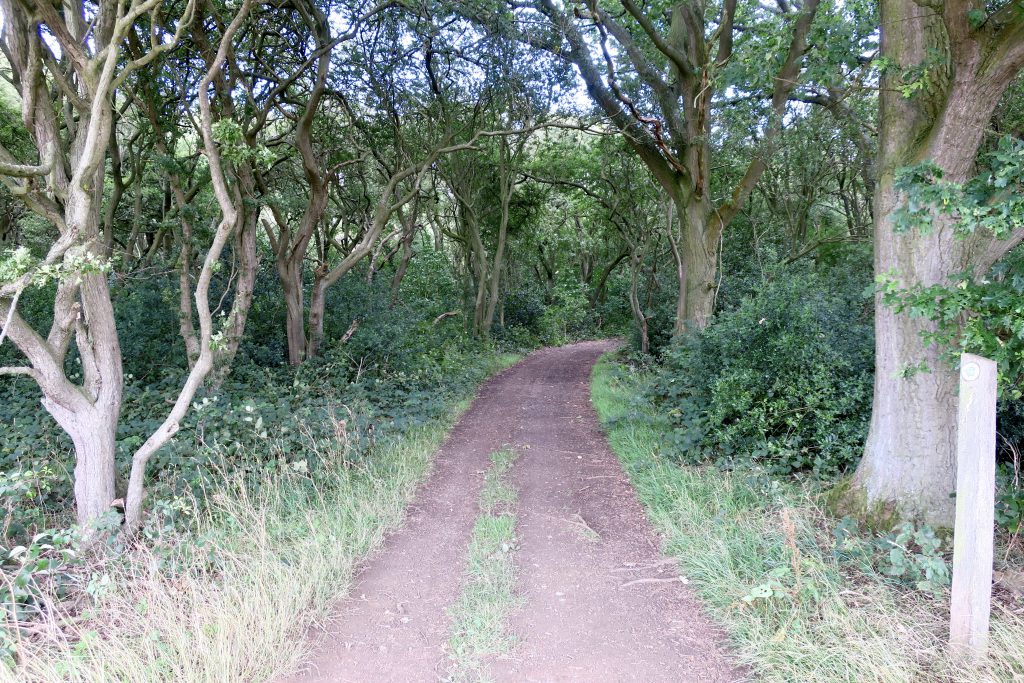
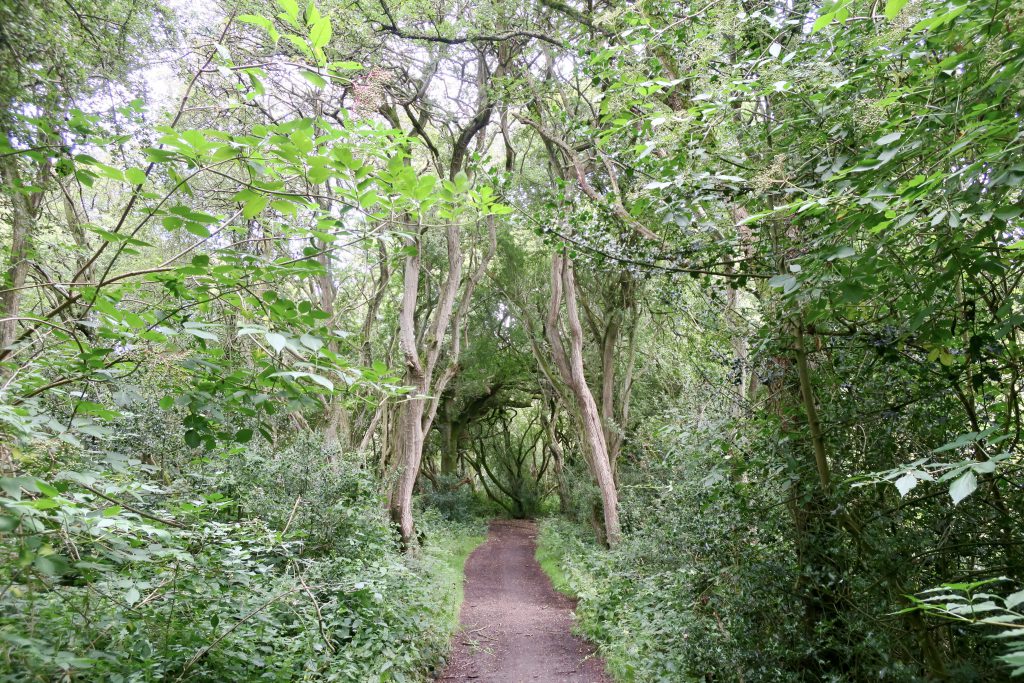
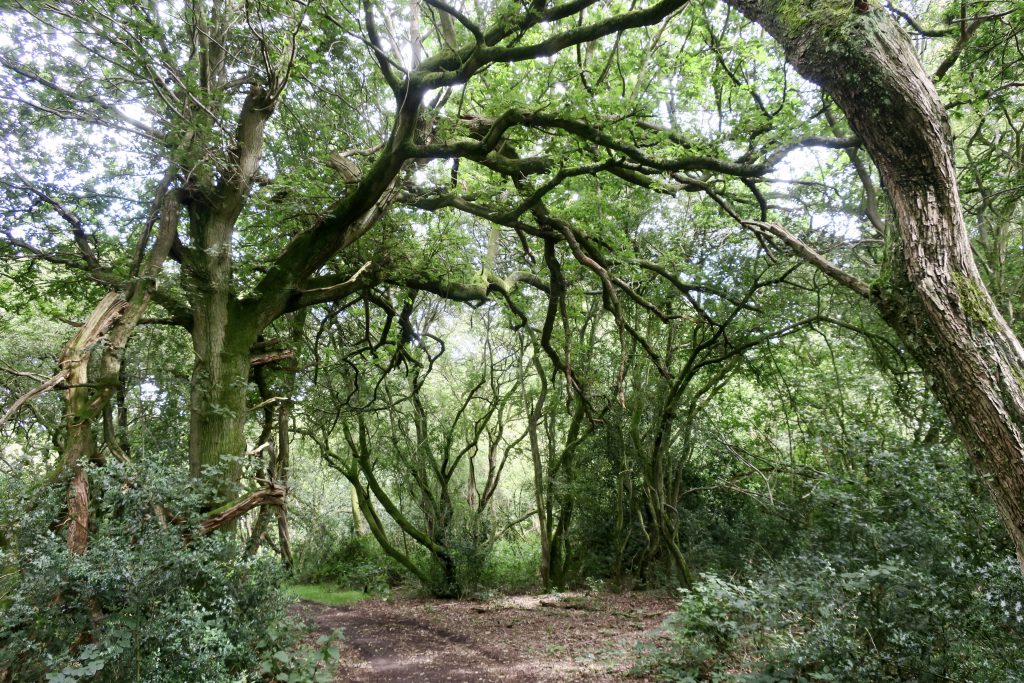
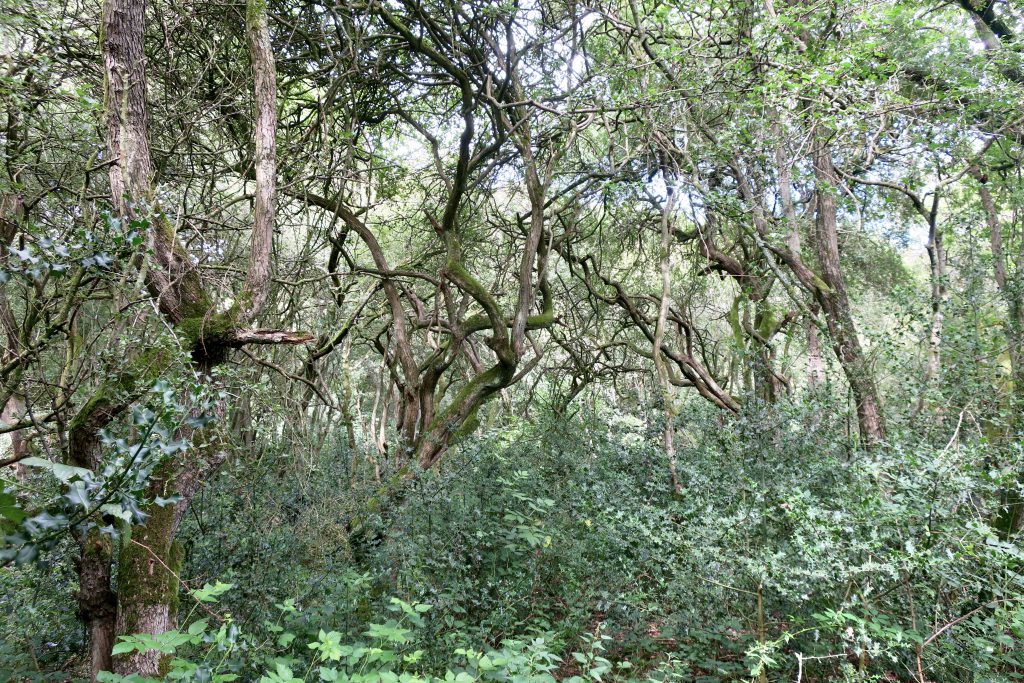
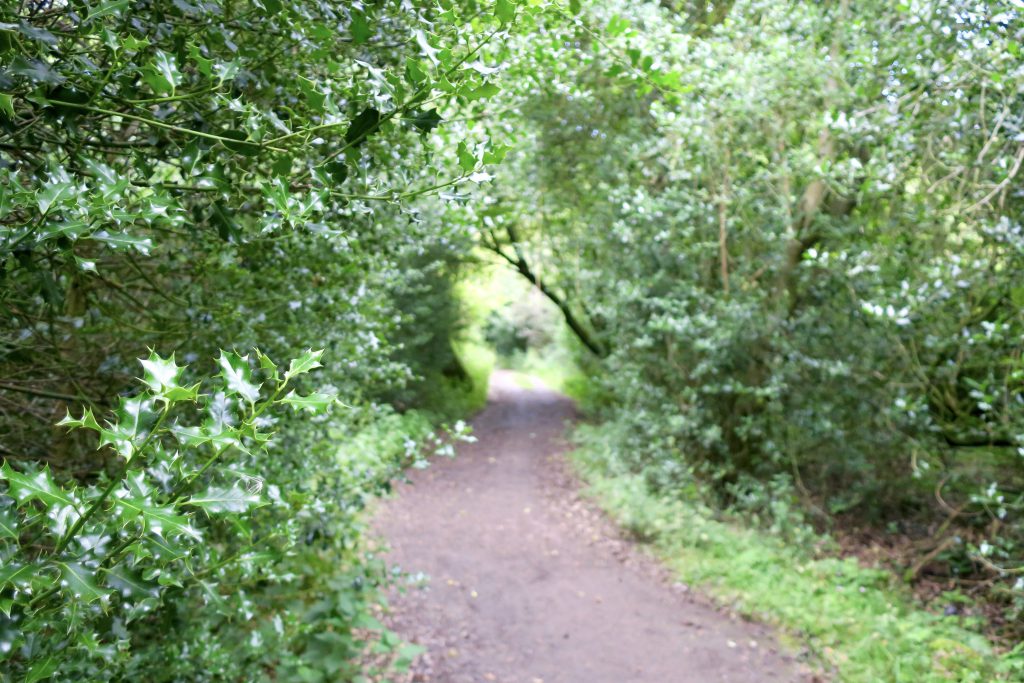
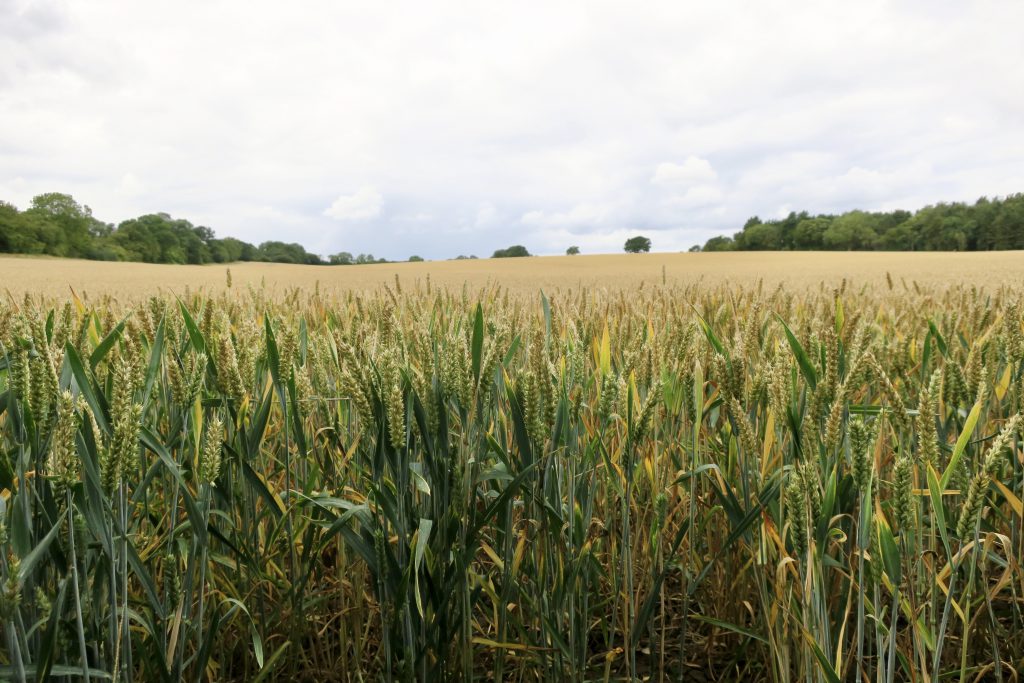
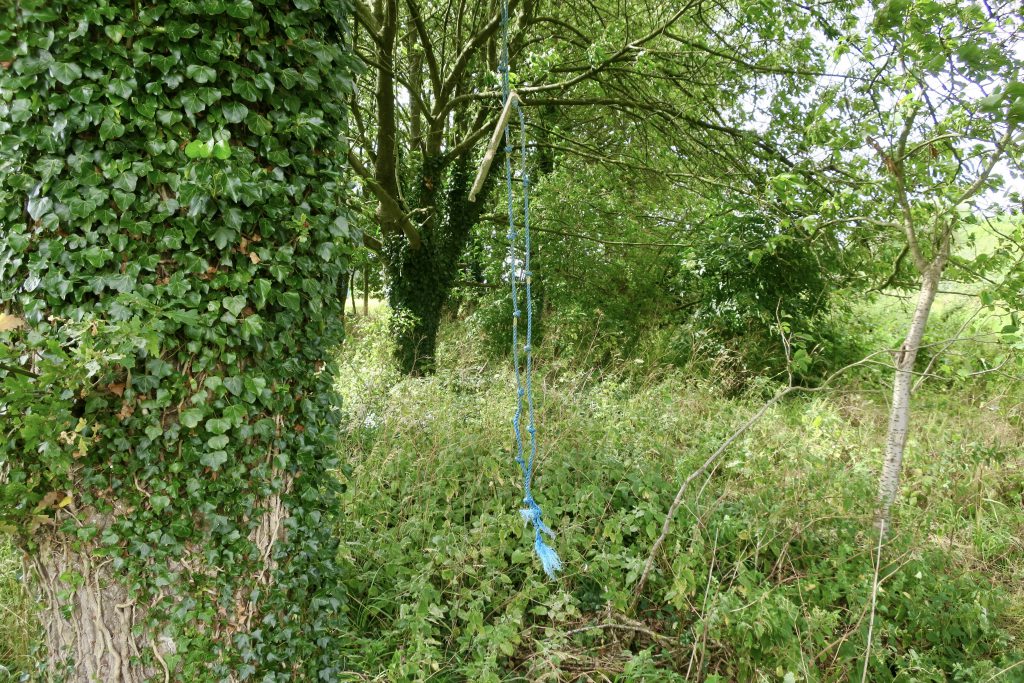
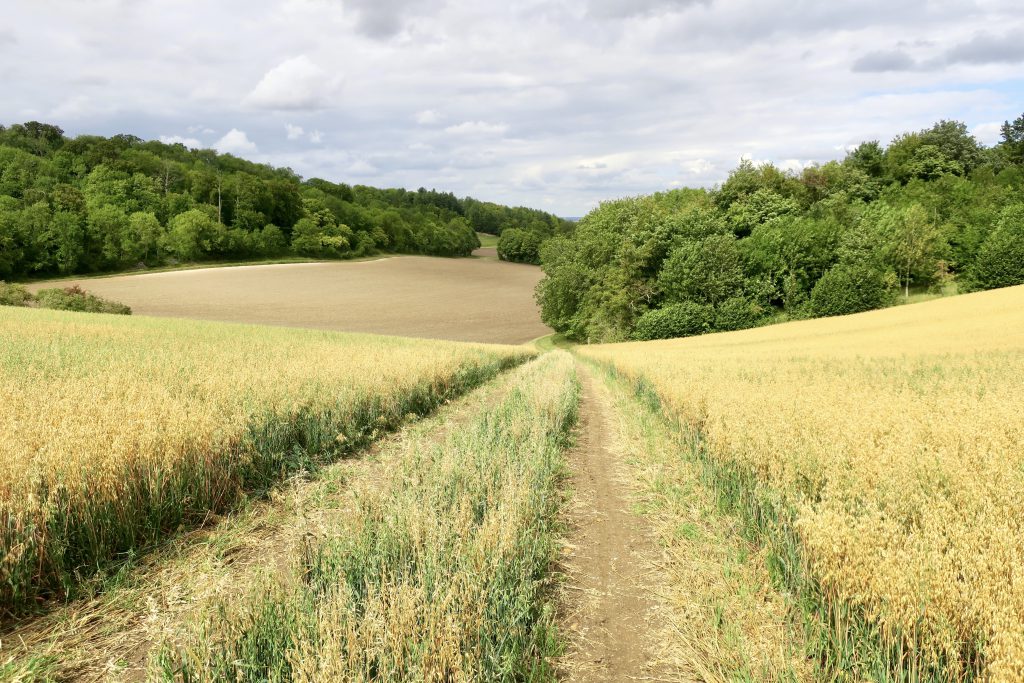
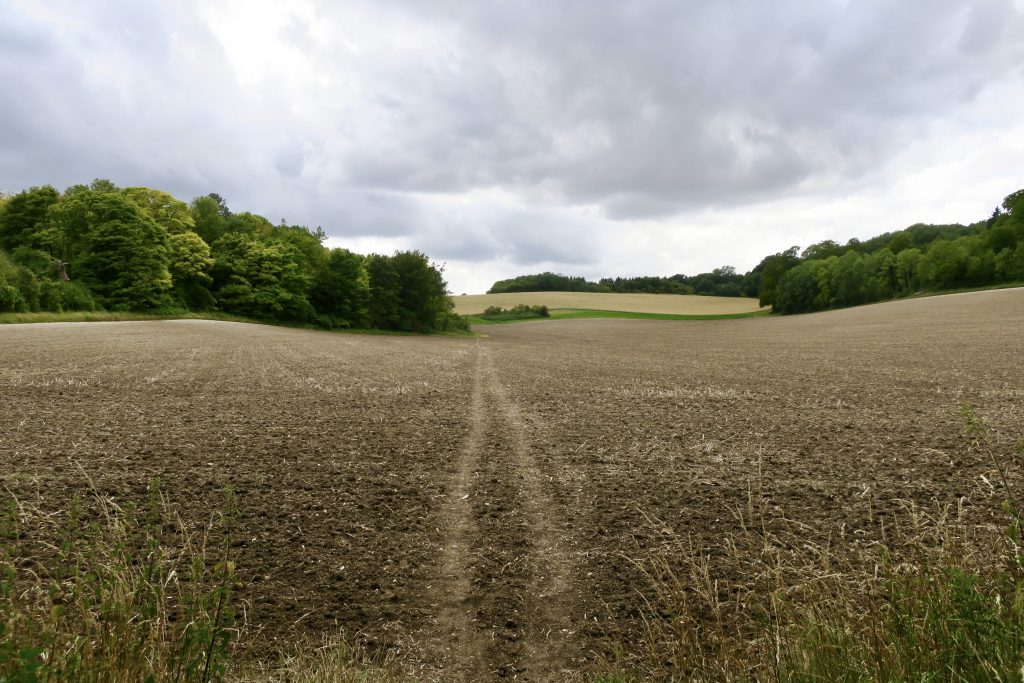
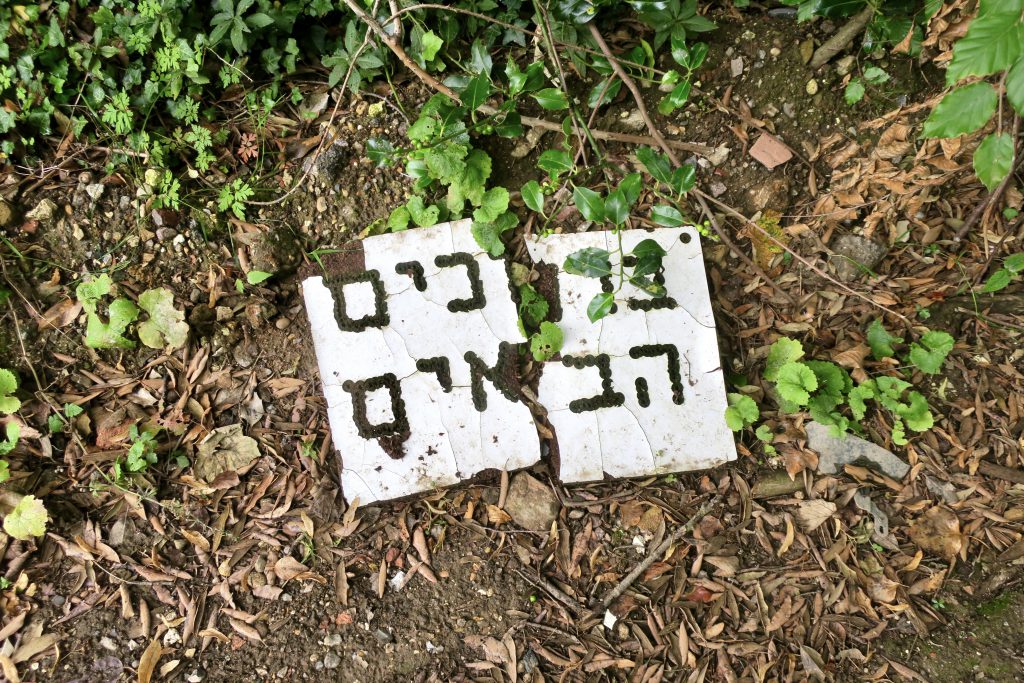
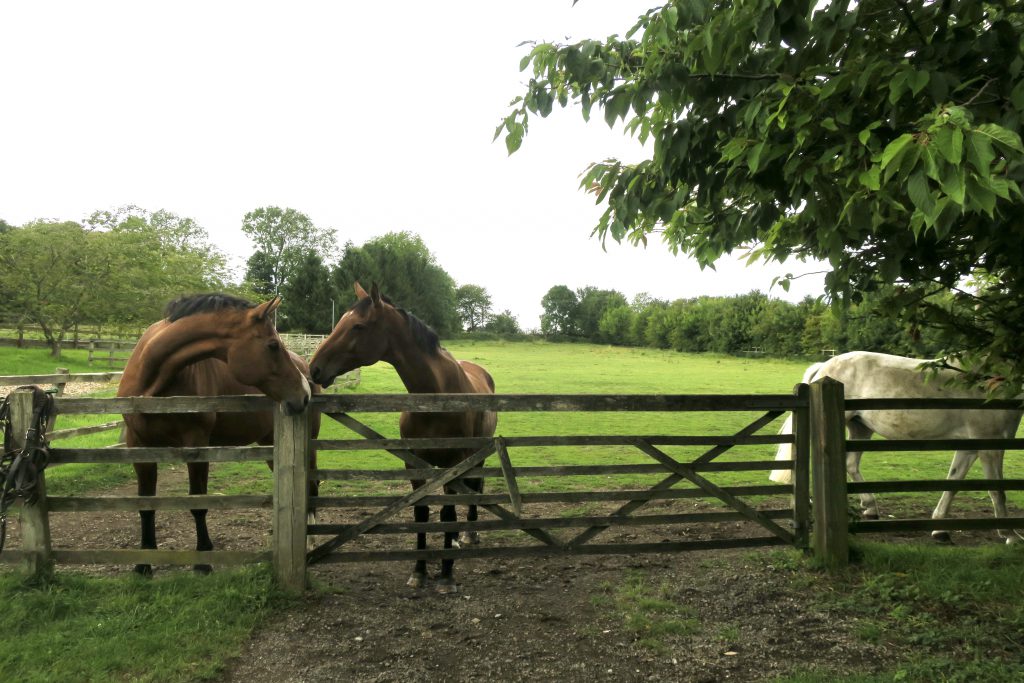
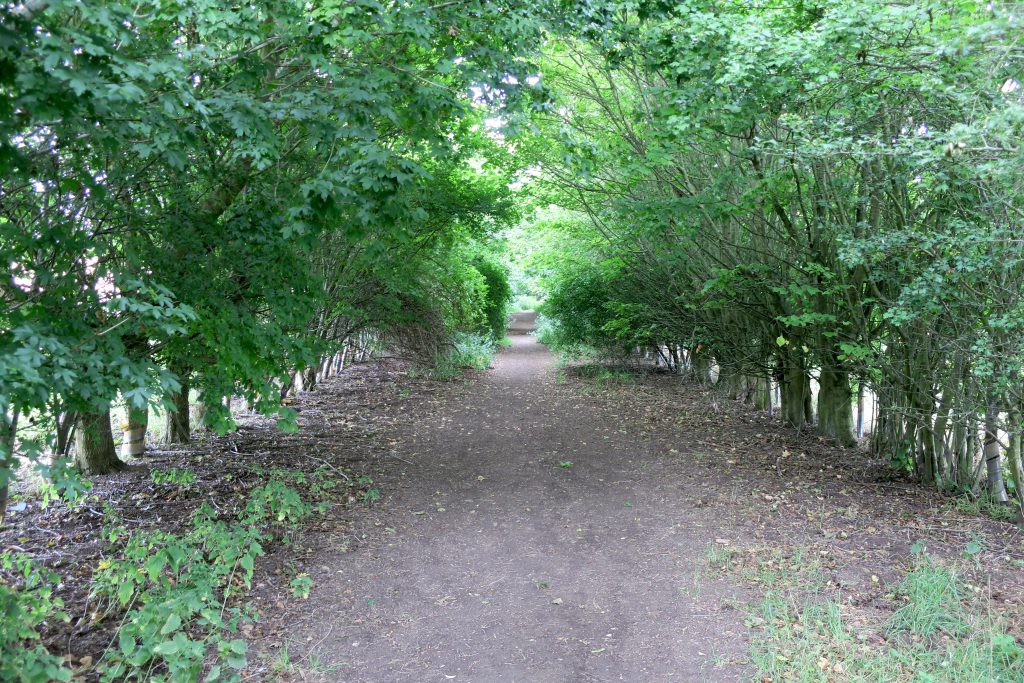
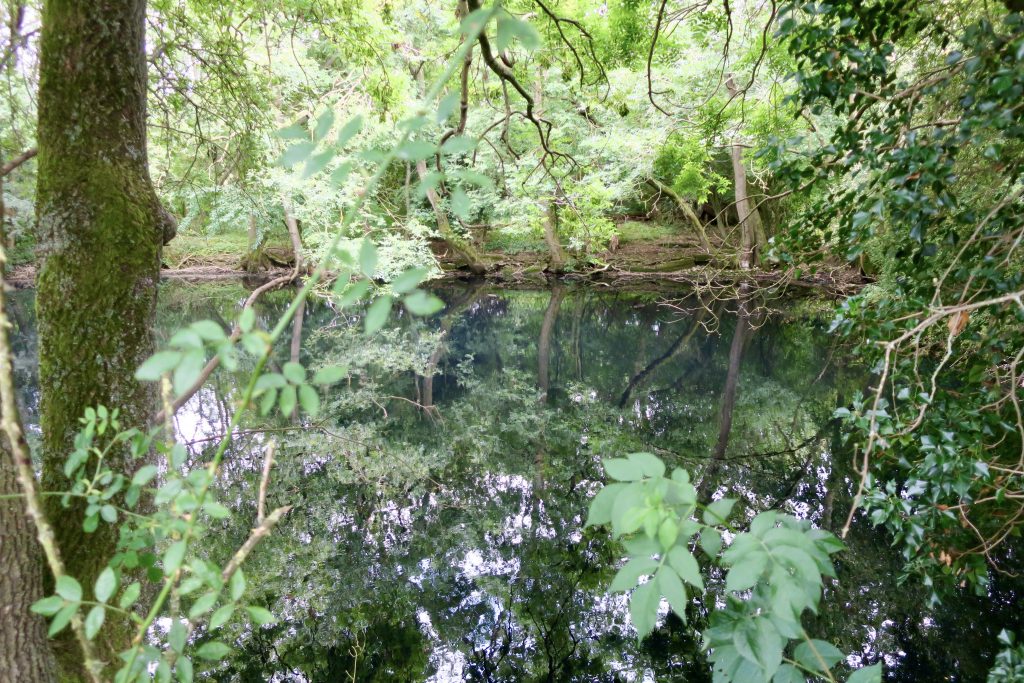
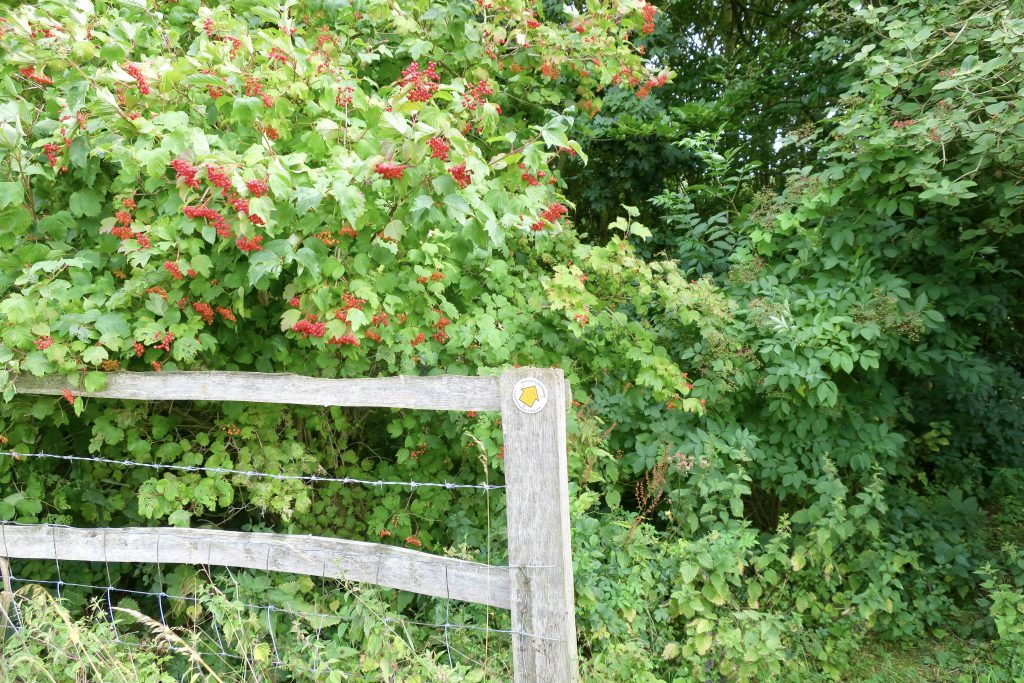
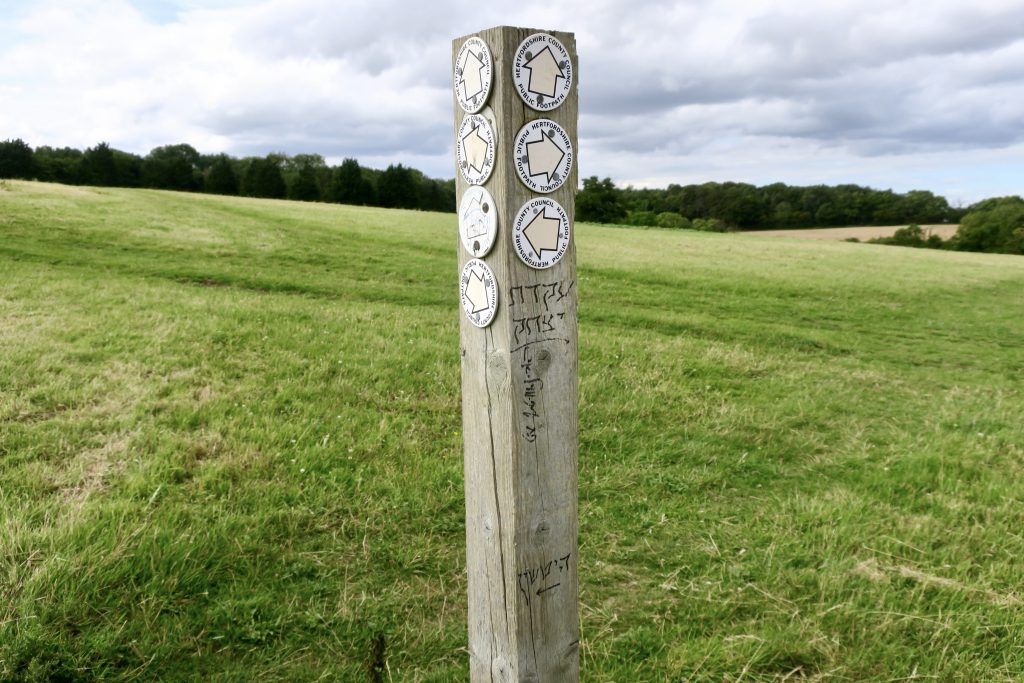
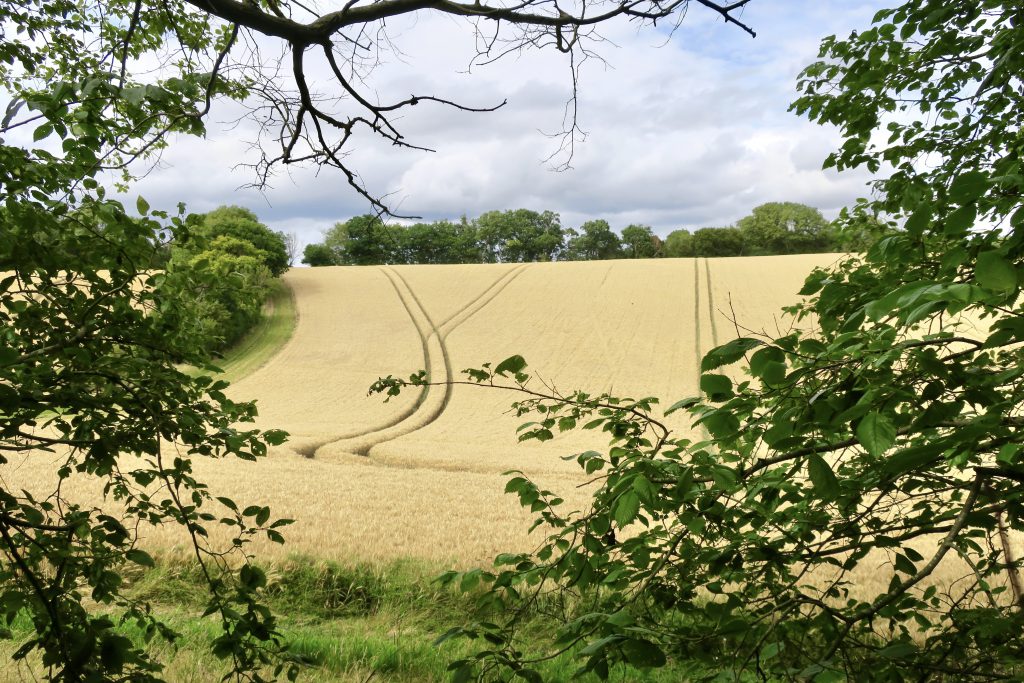
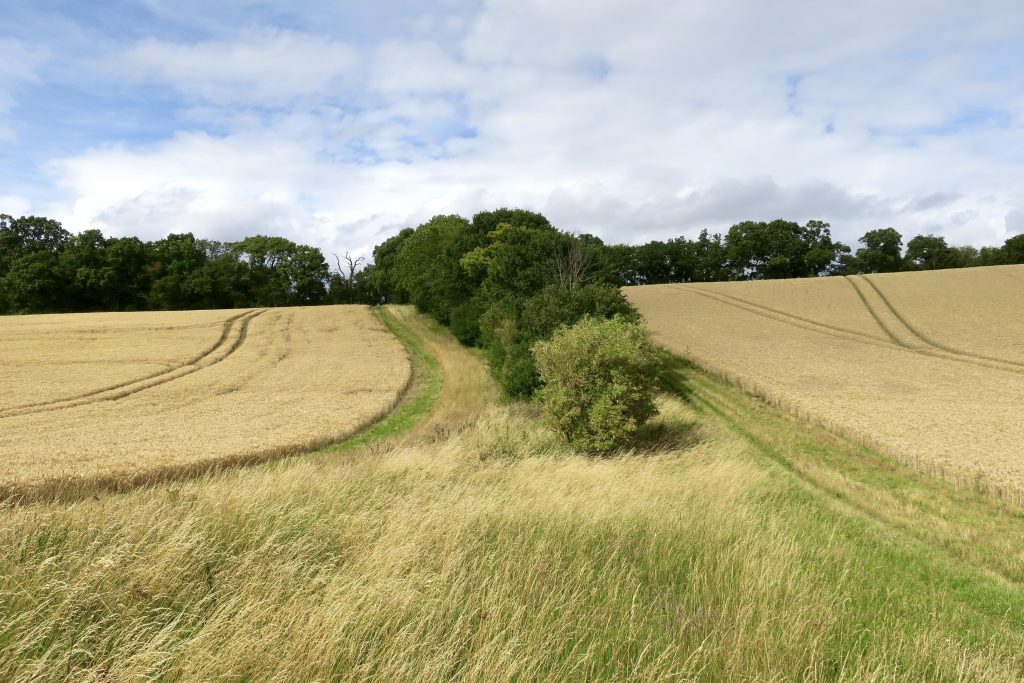
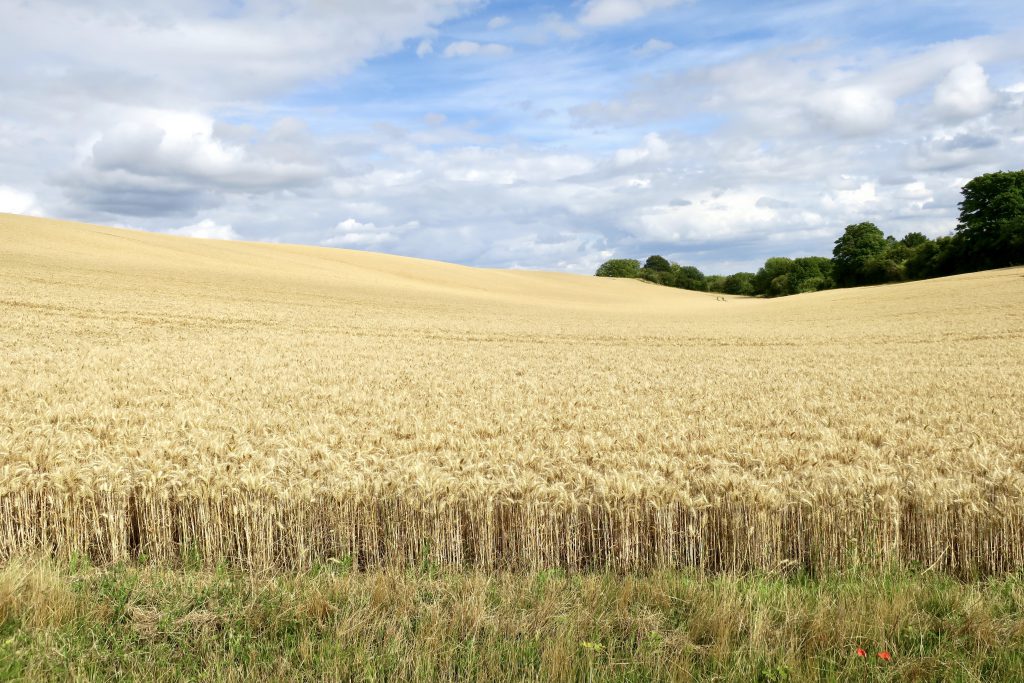
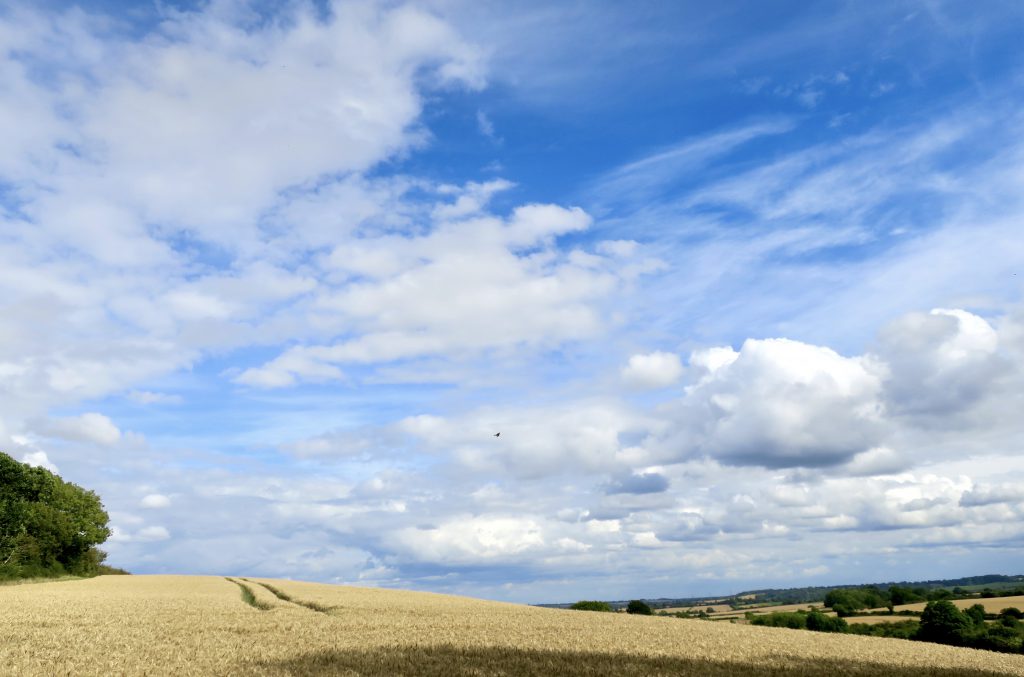
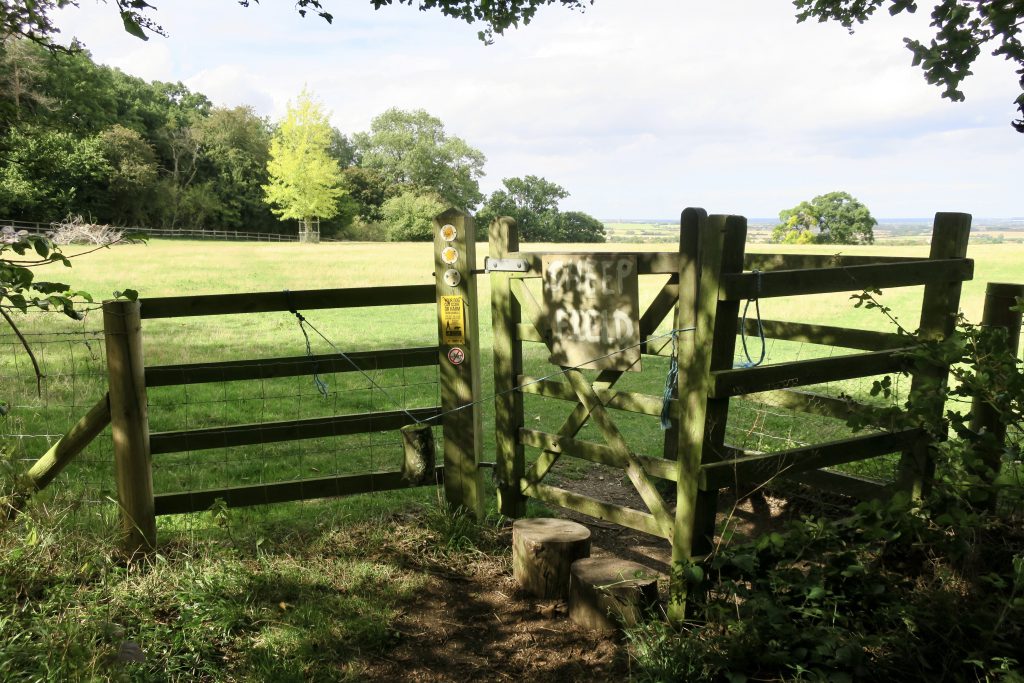
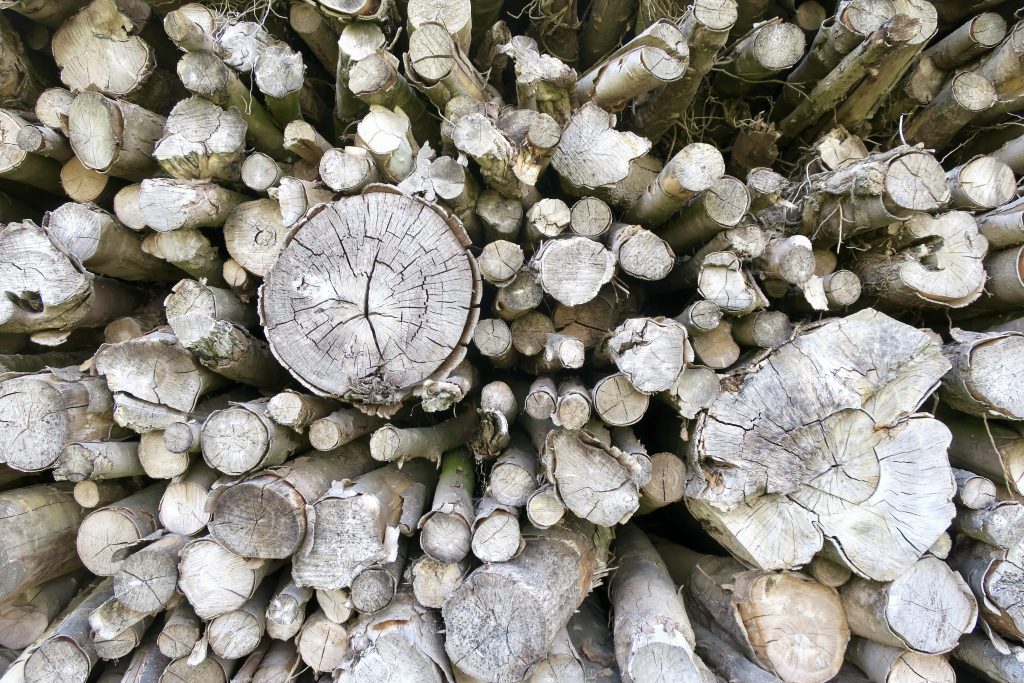
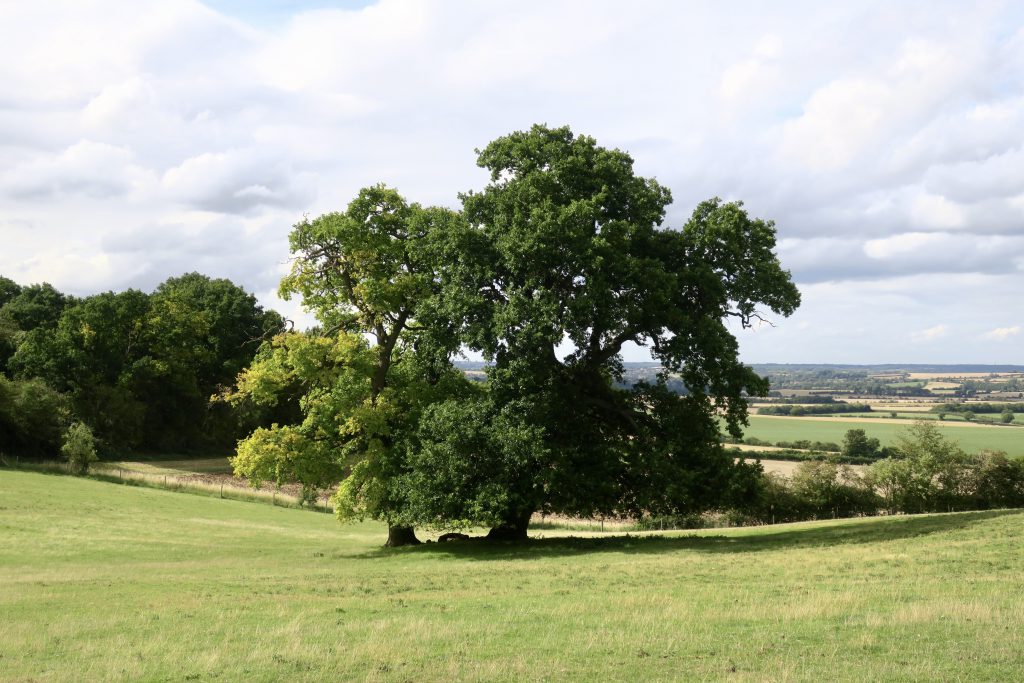
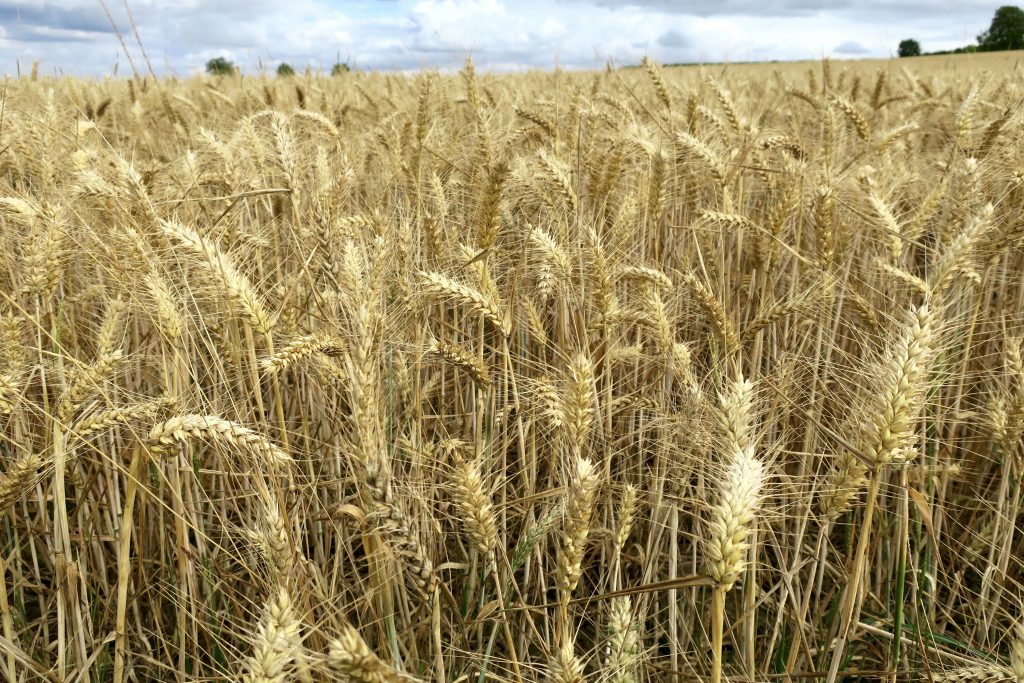
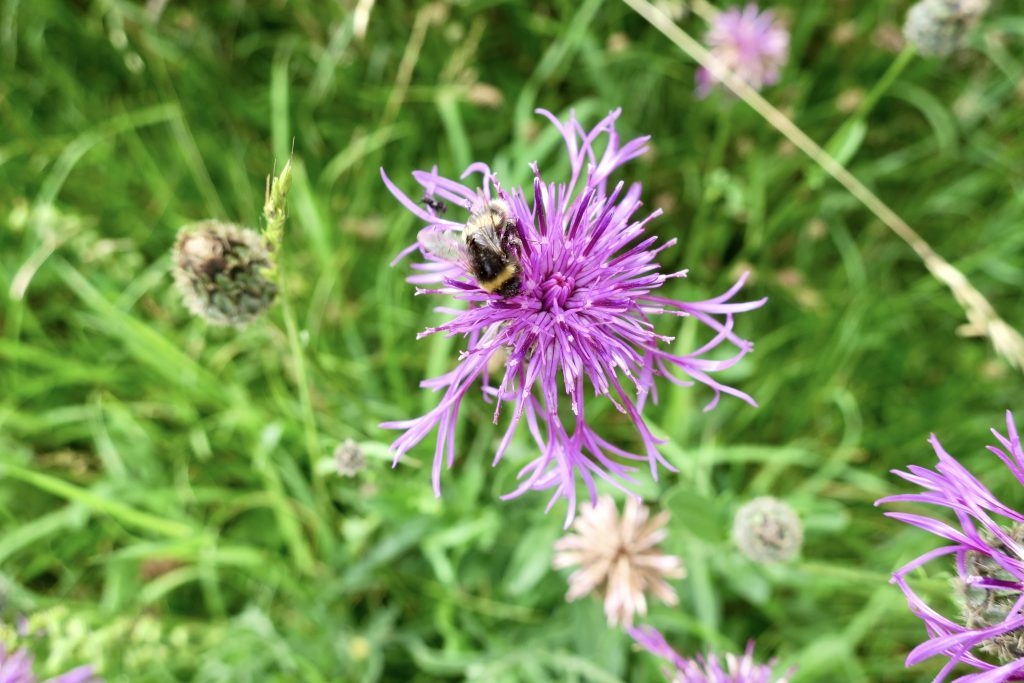
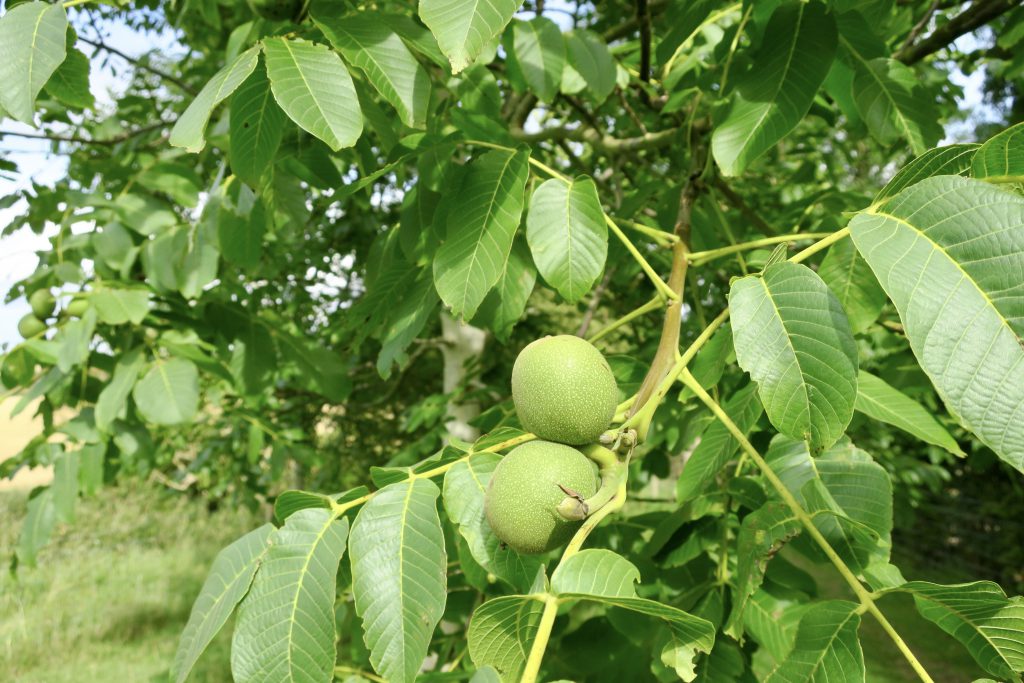
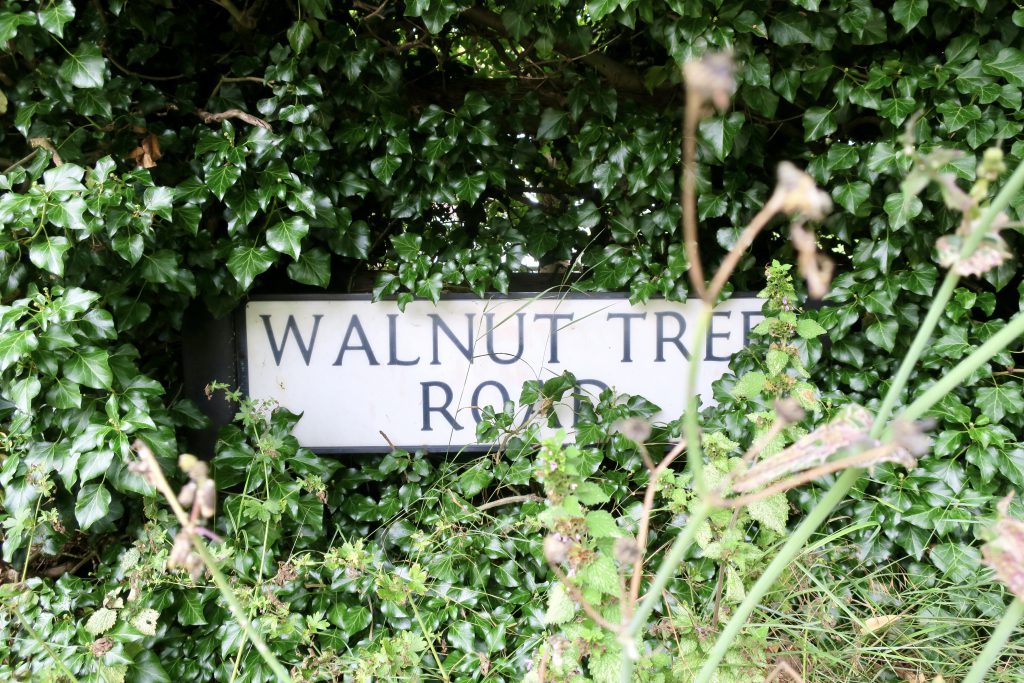
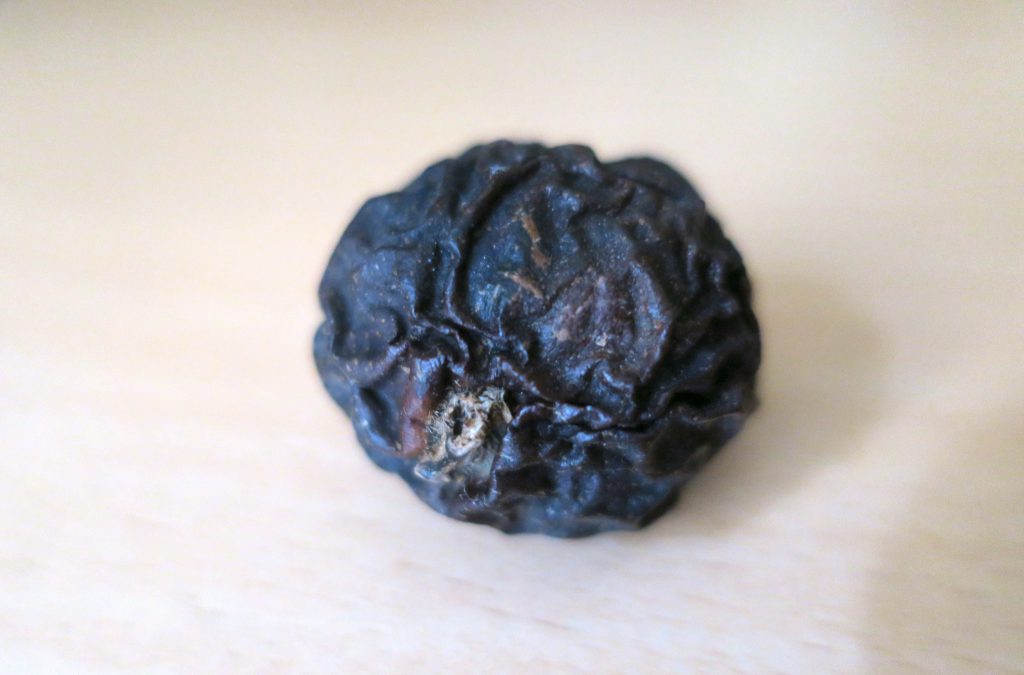
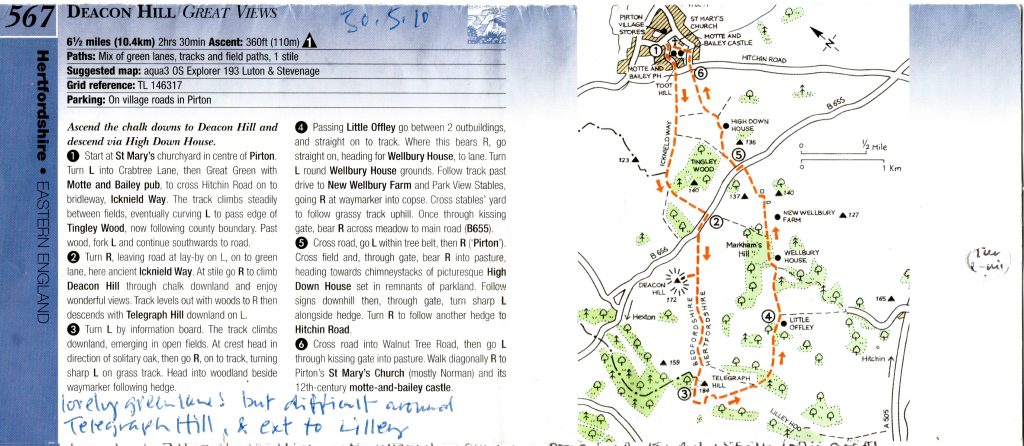
Lovely walk, but not very autumnal?
This was late July. We’ve not been getting out as much as we should recently, what with lockdown and all the rain, so I’ve been revisiting some of our summer walks.